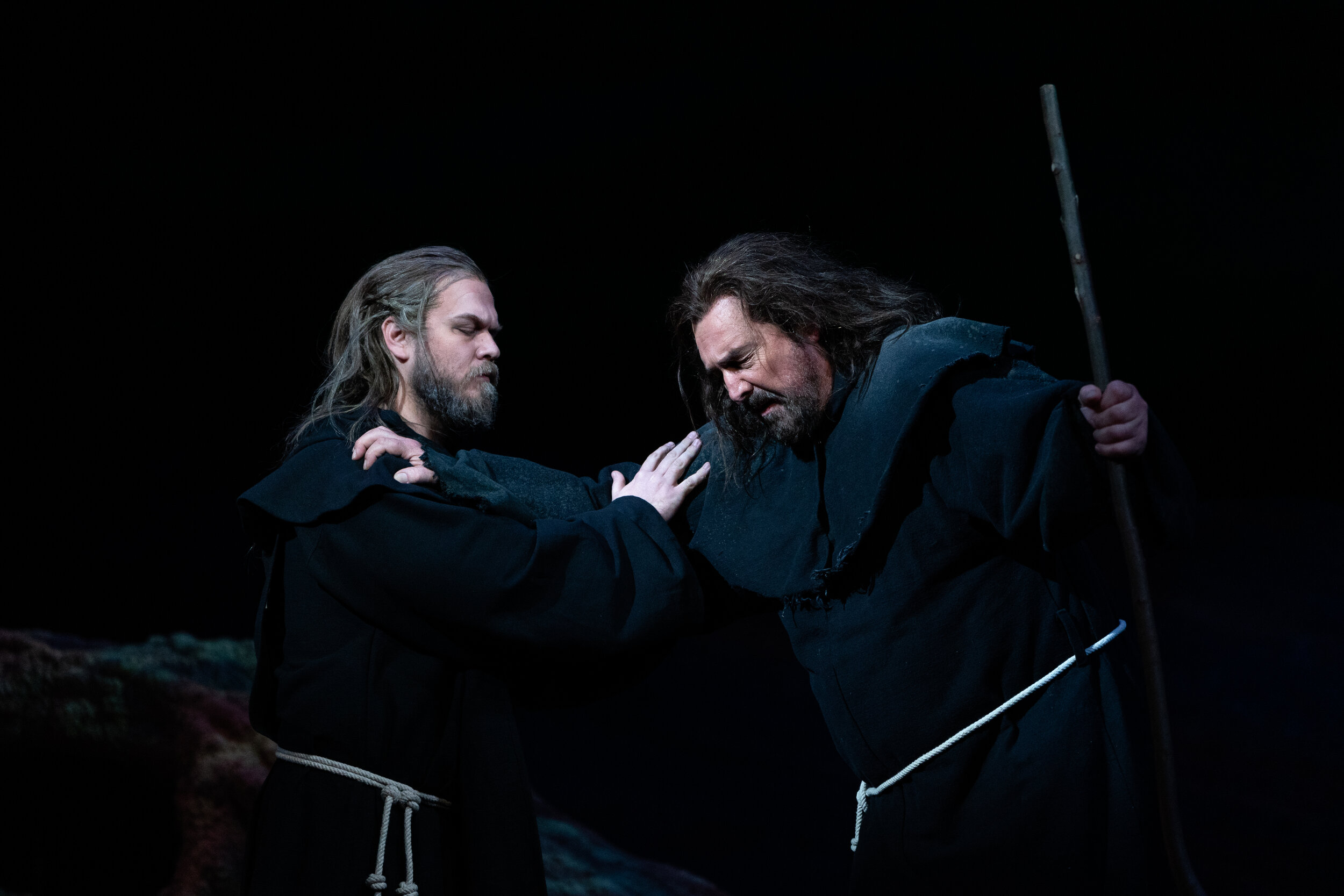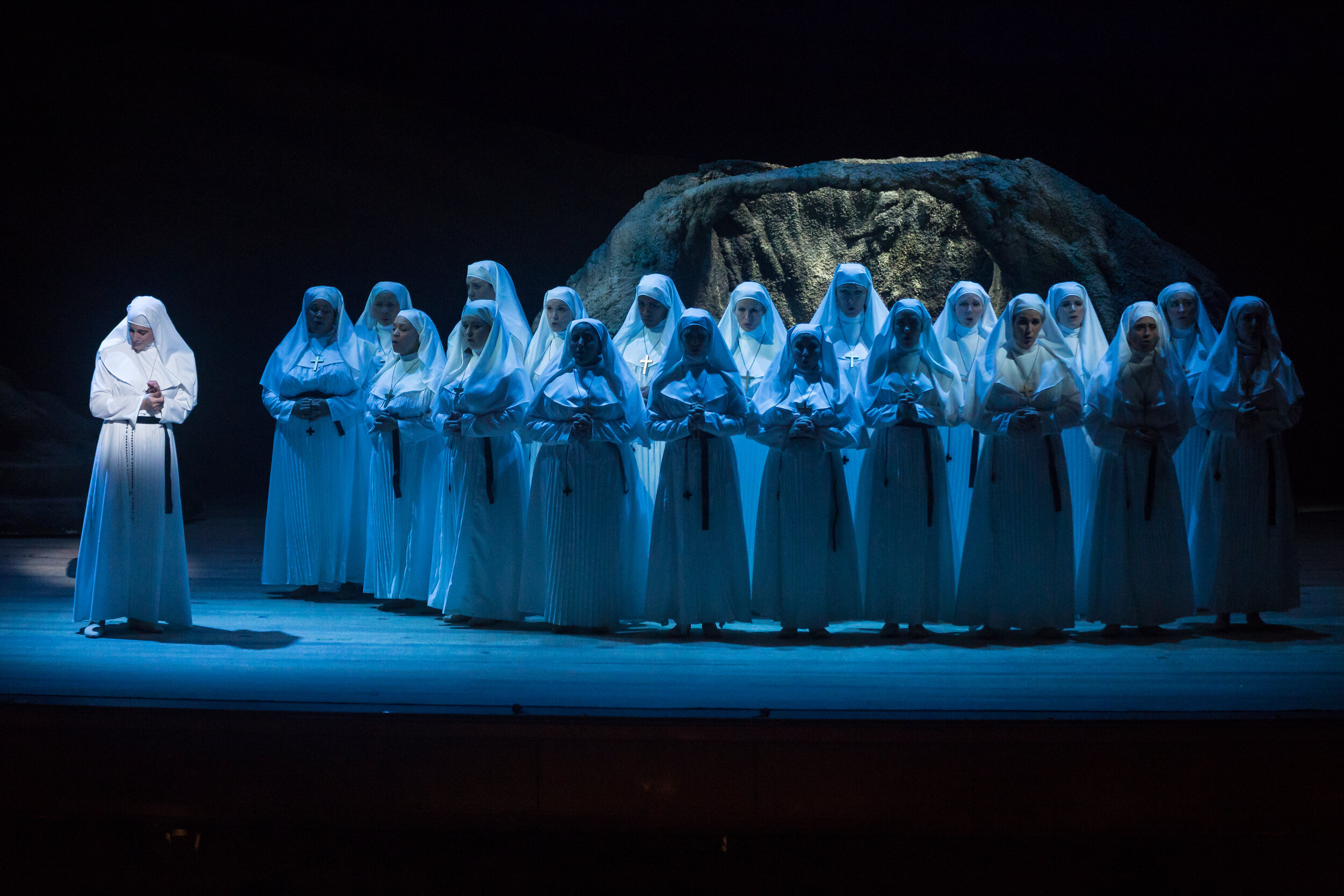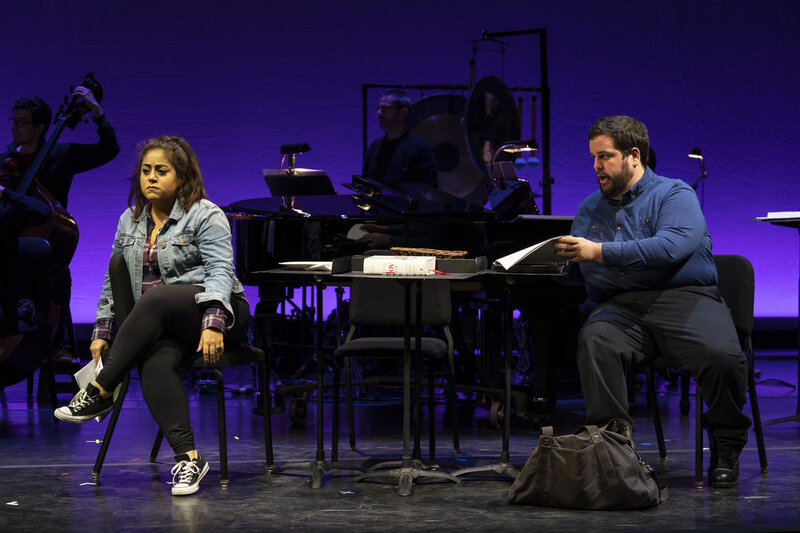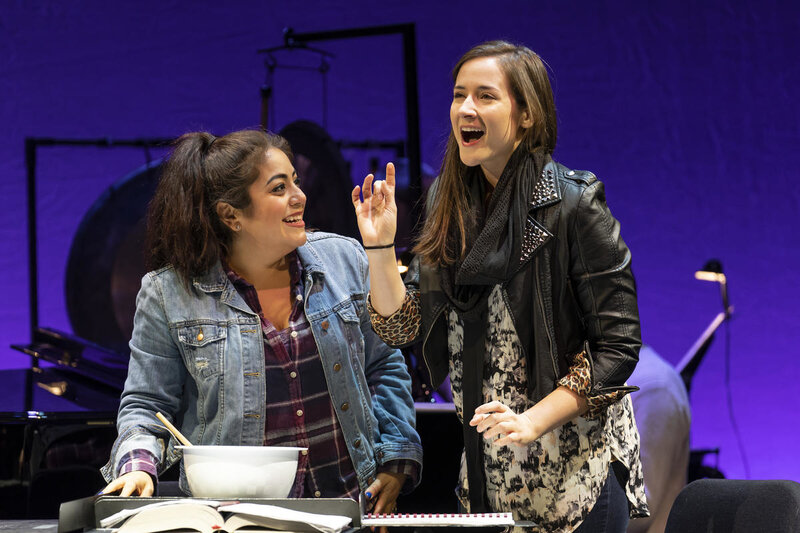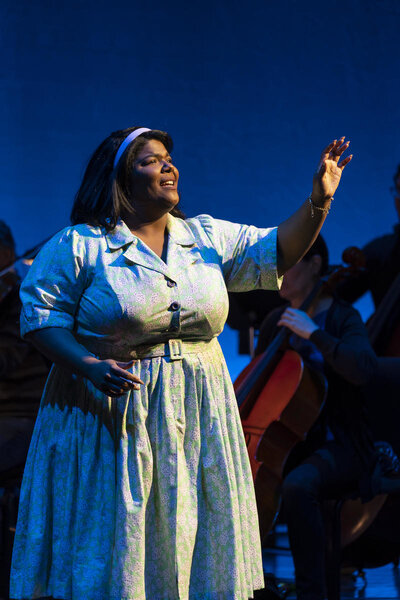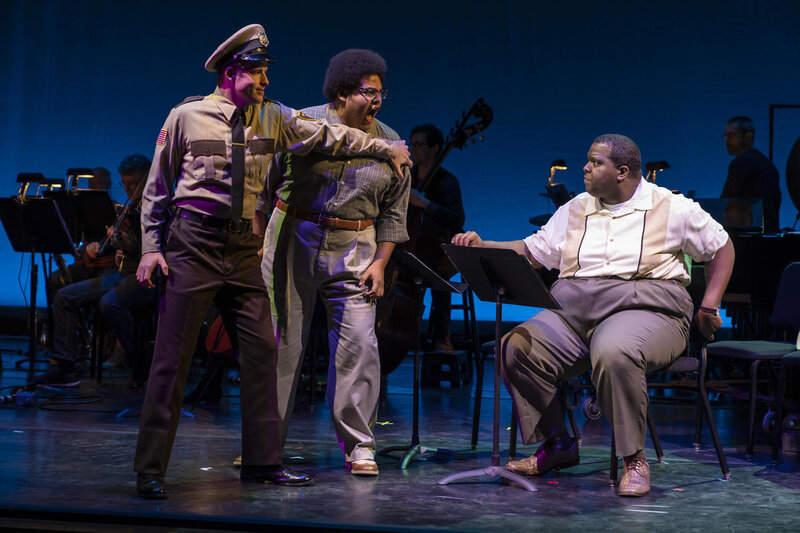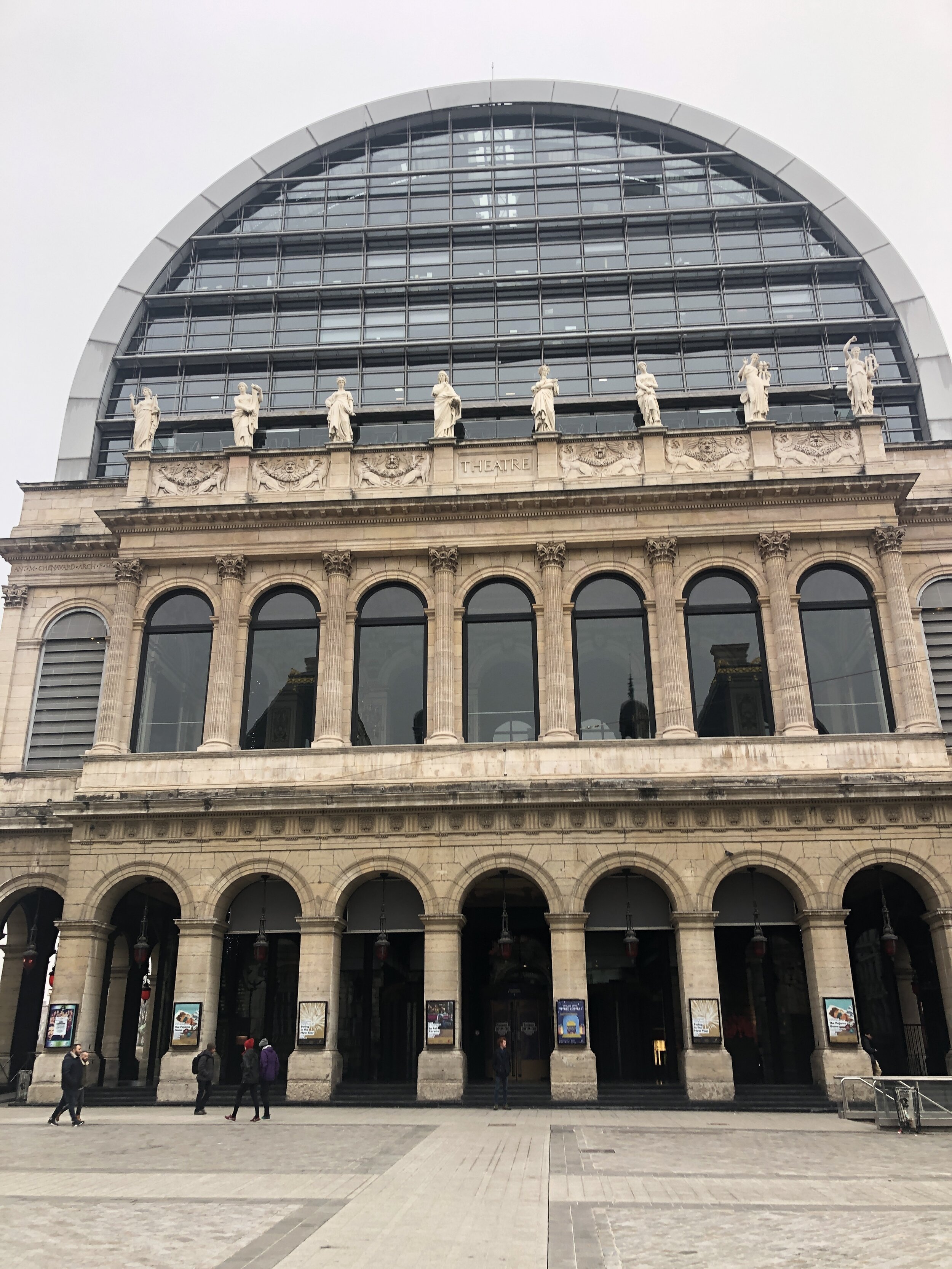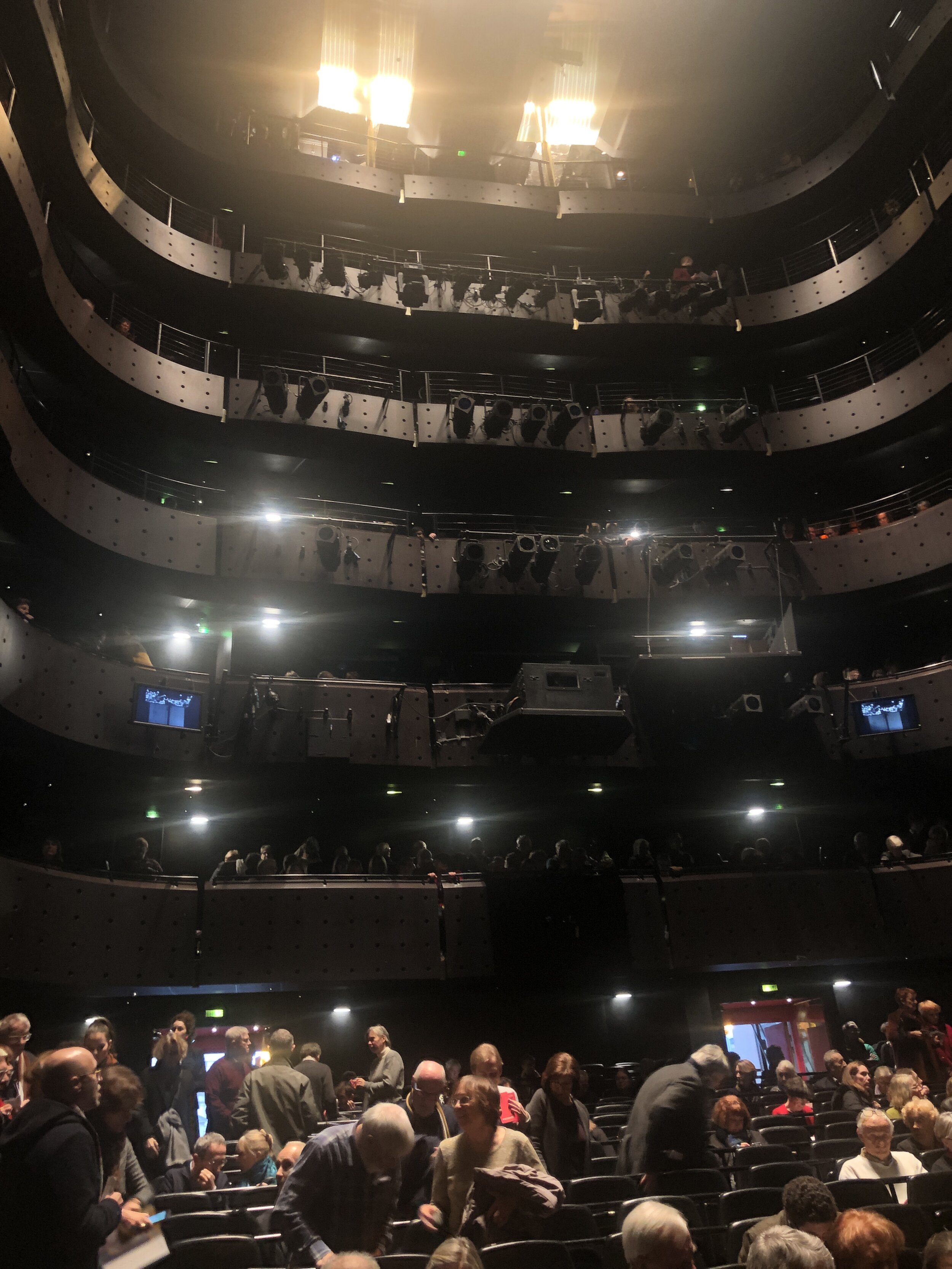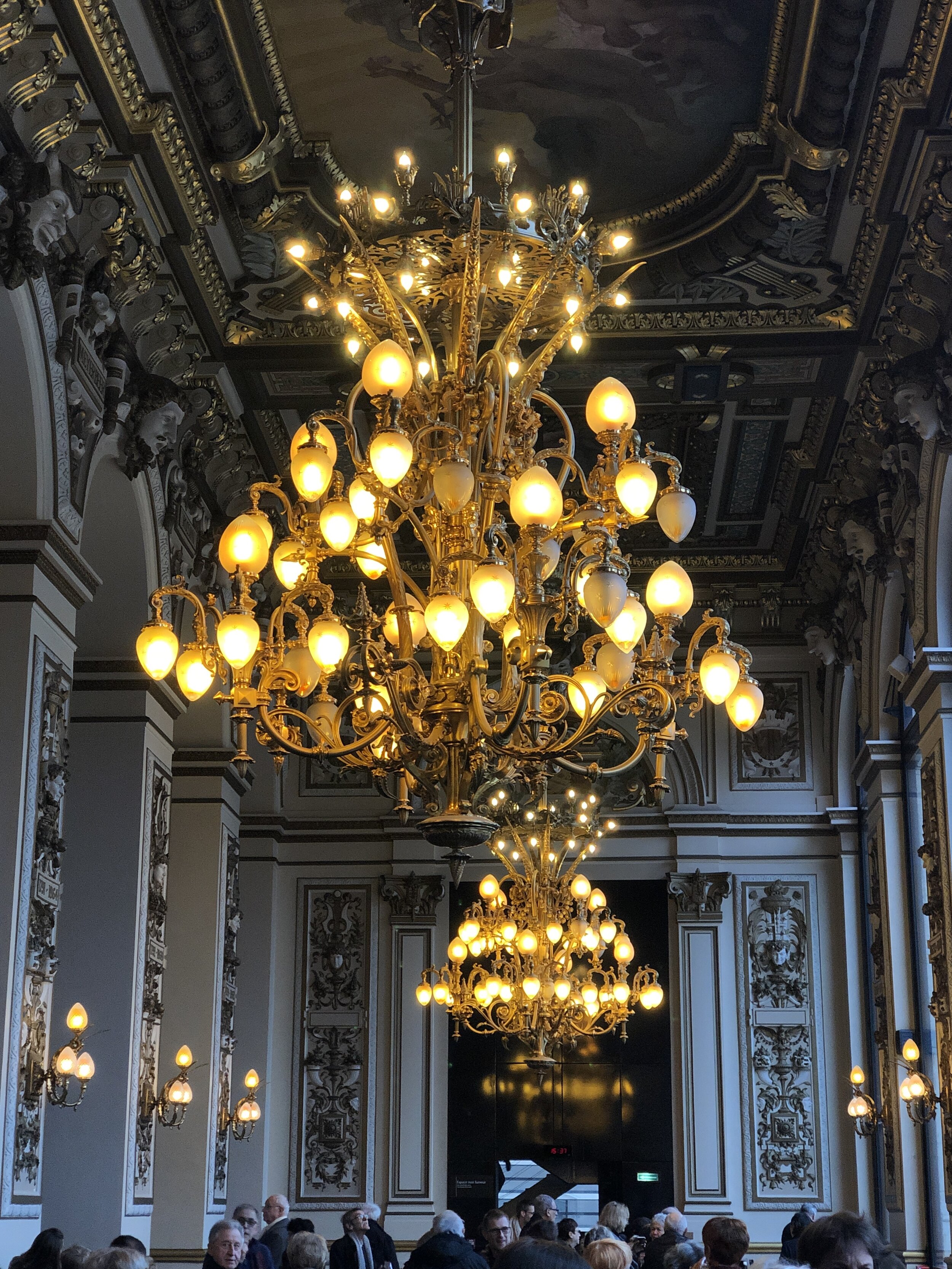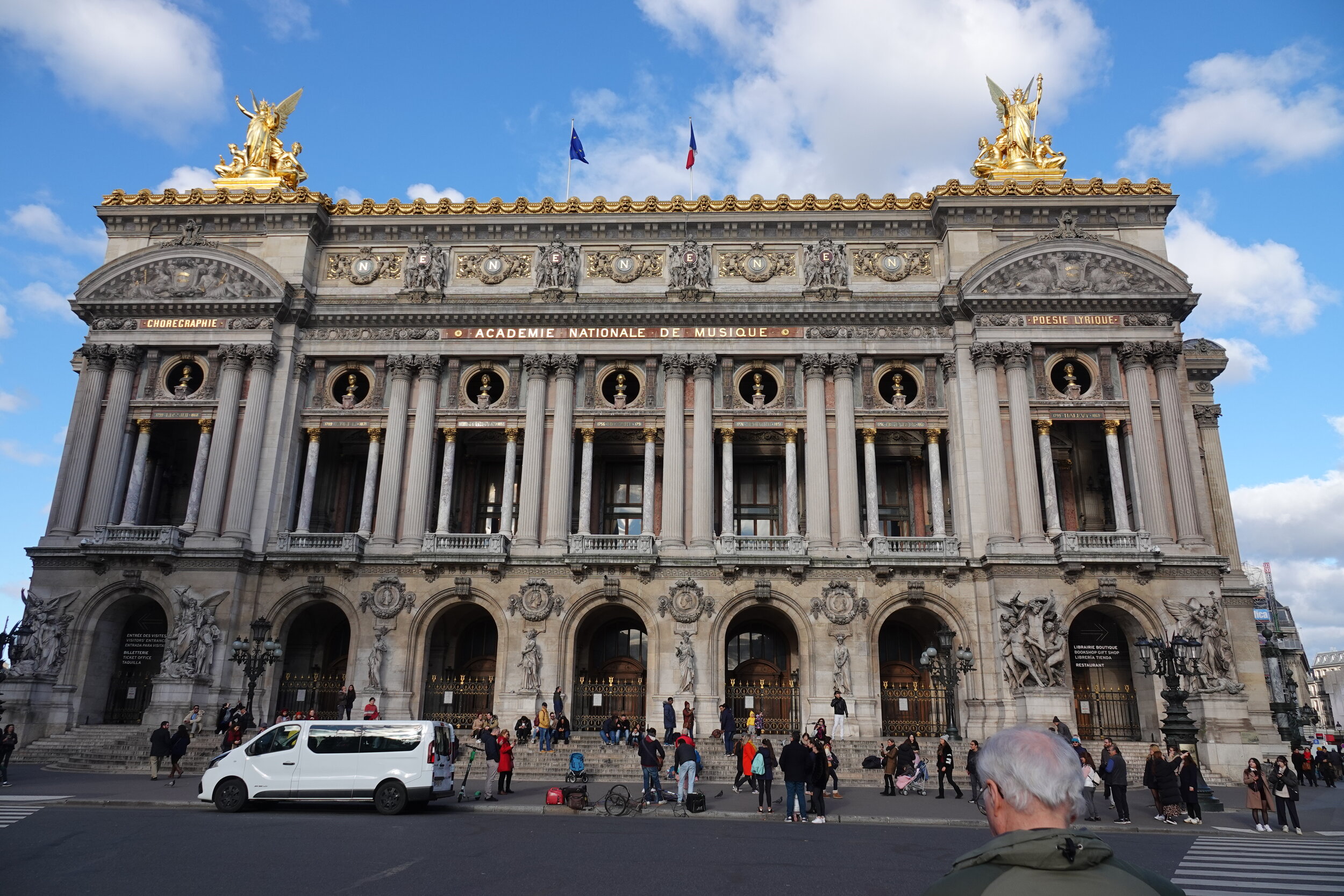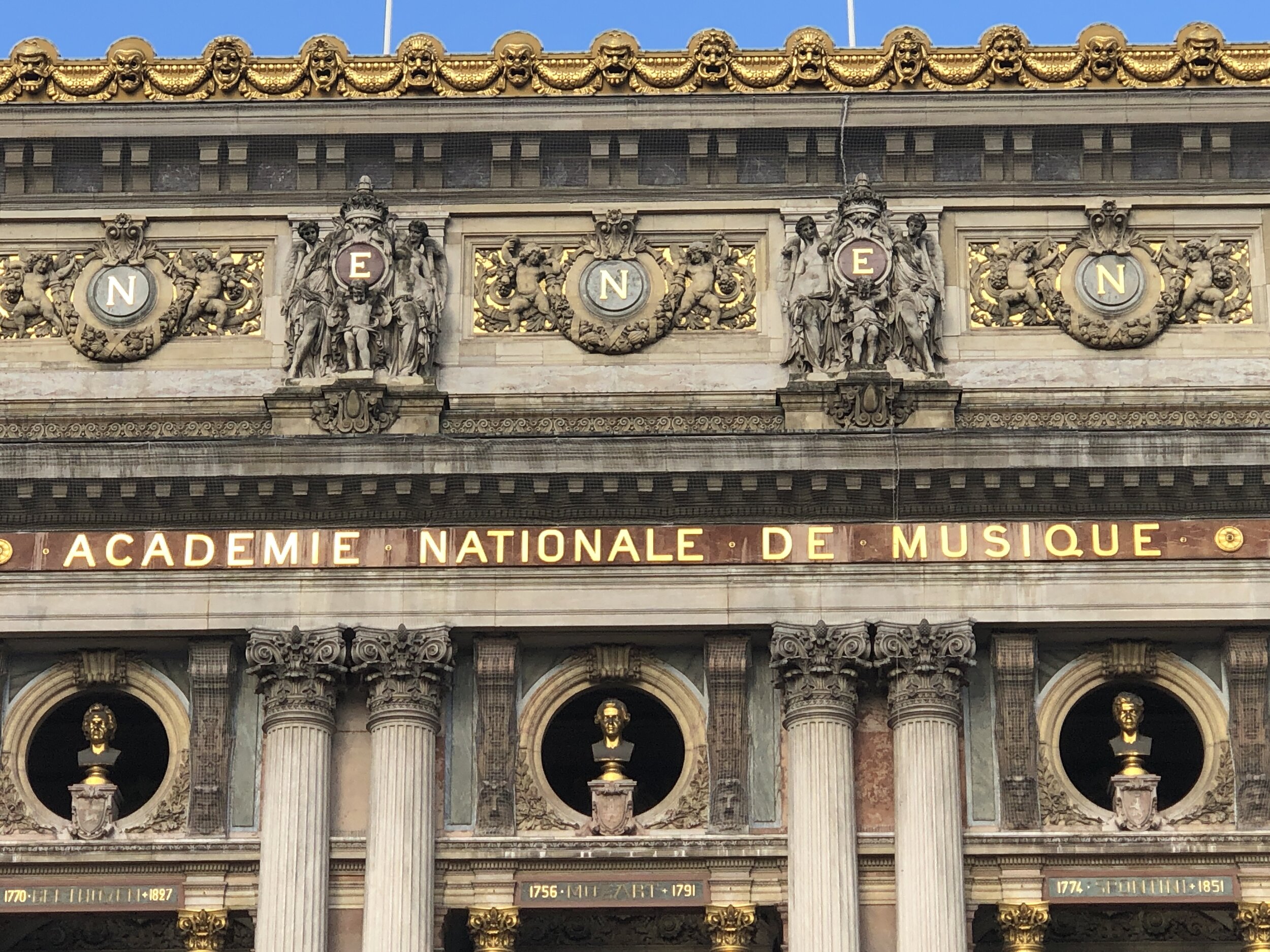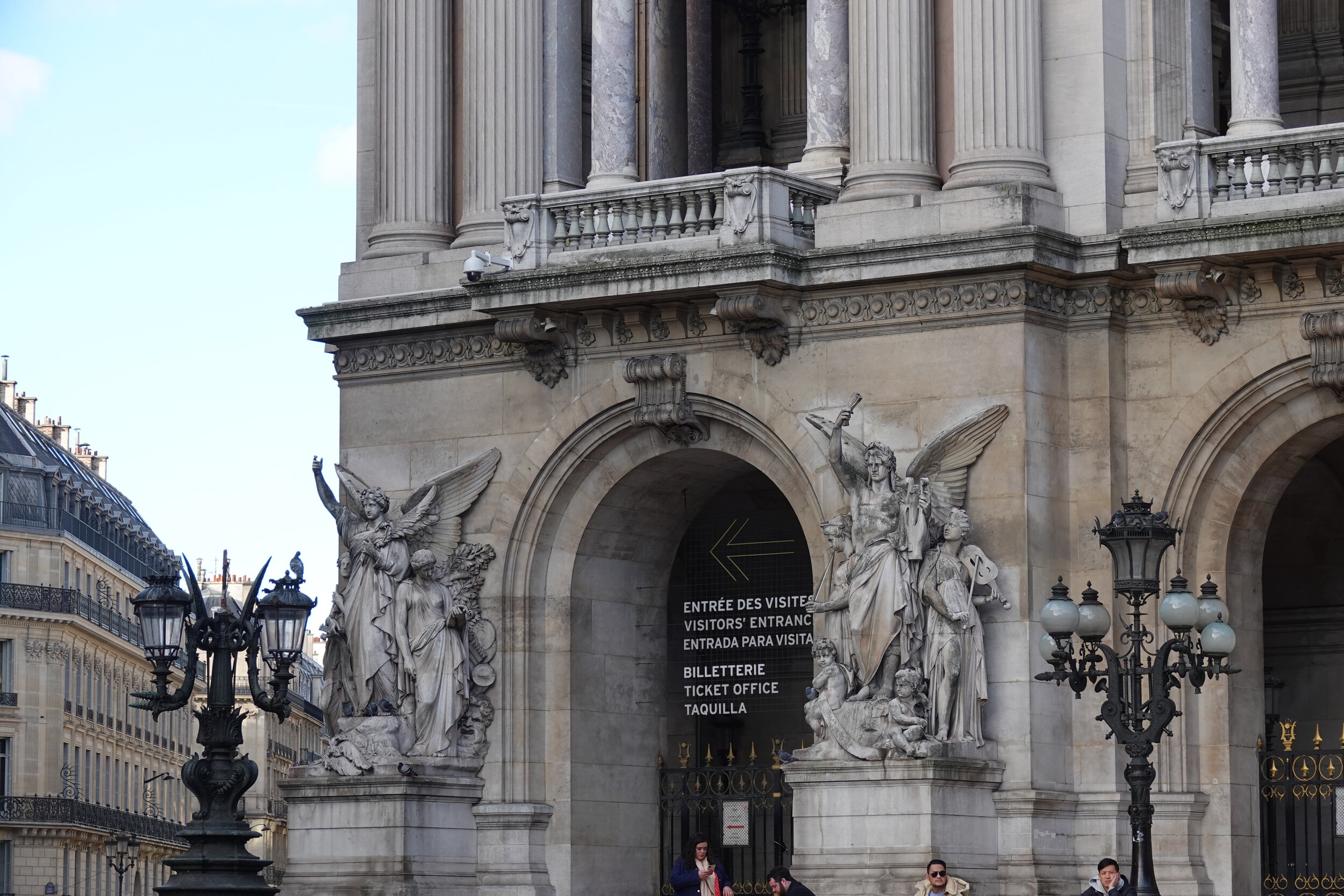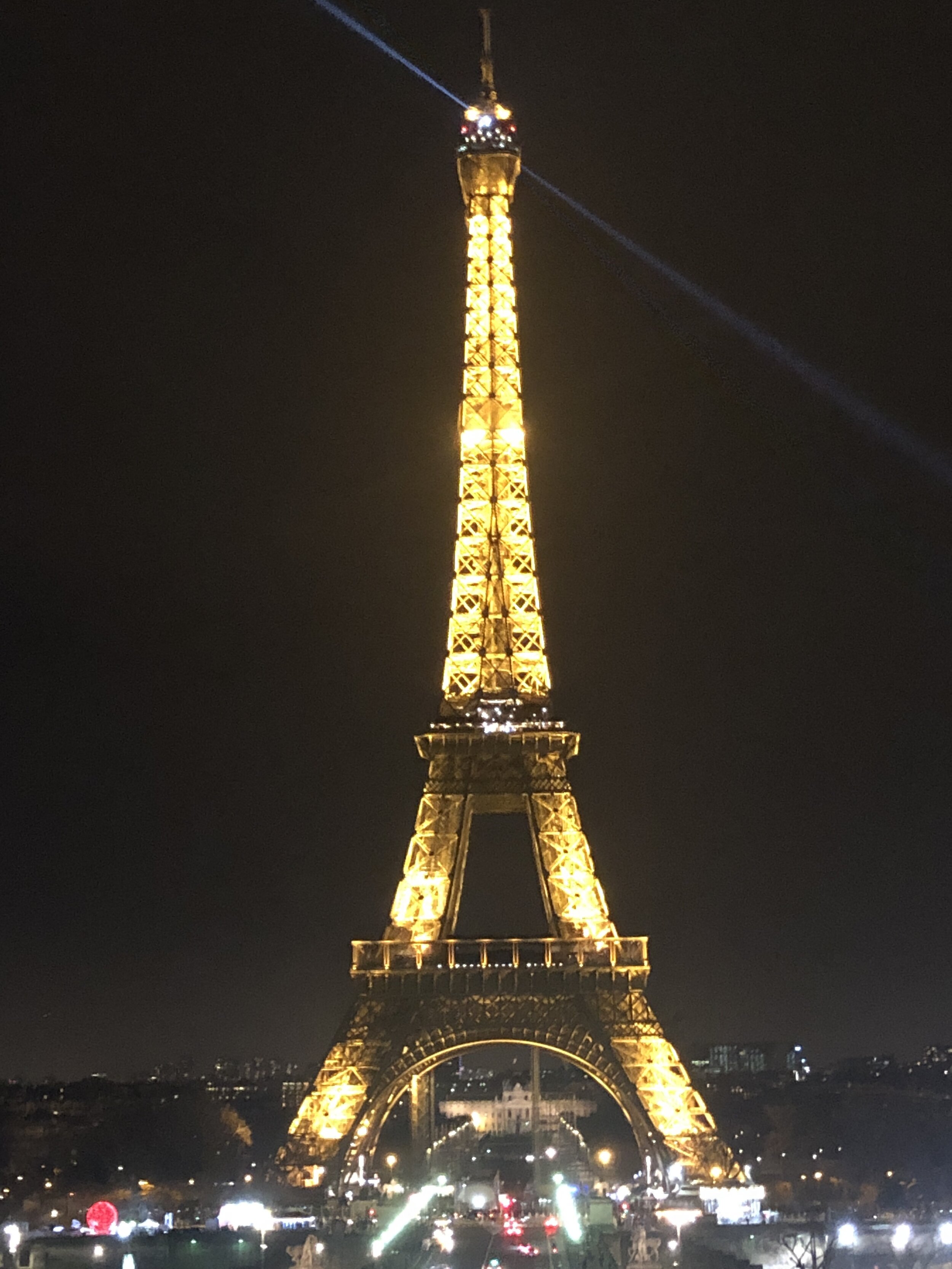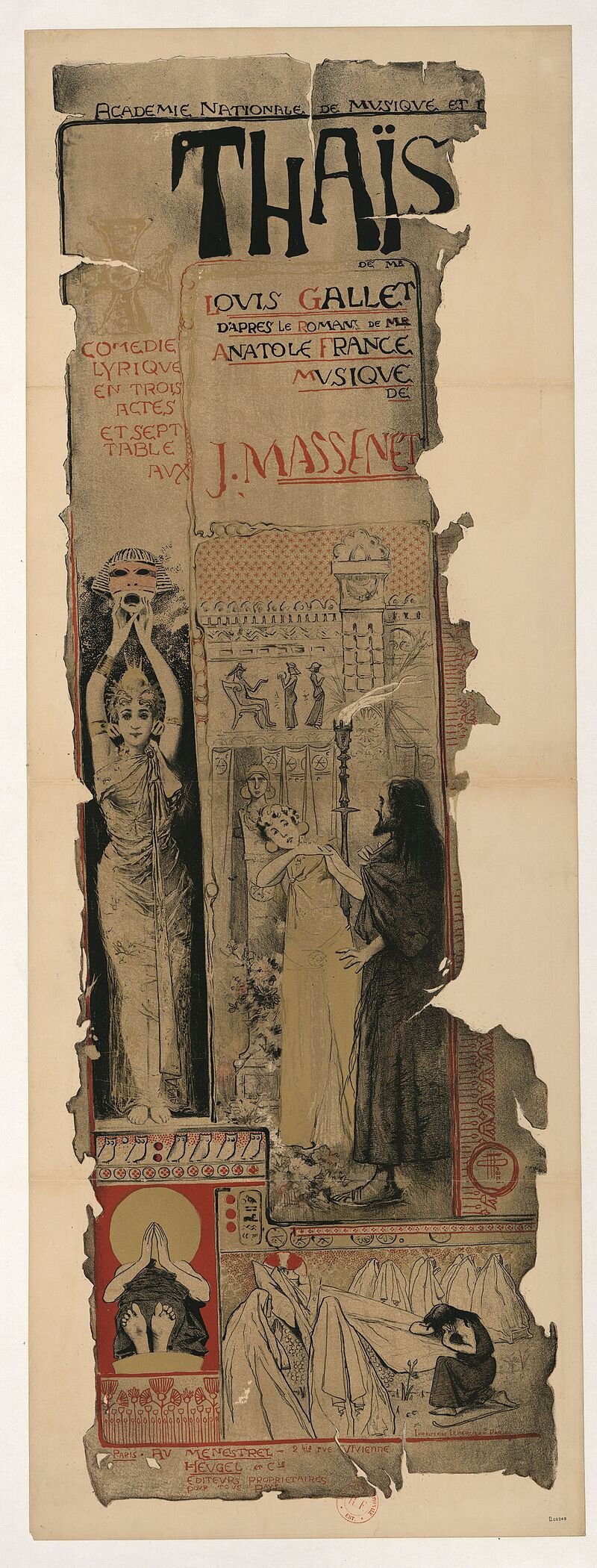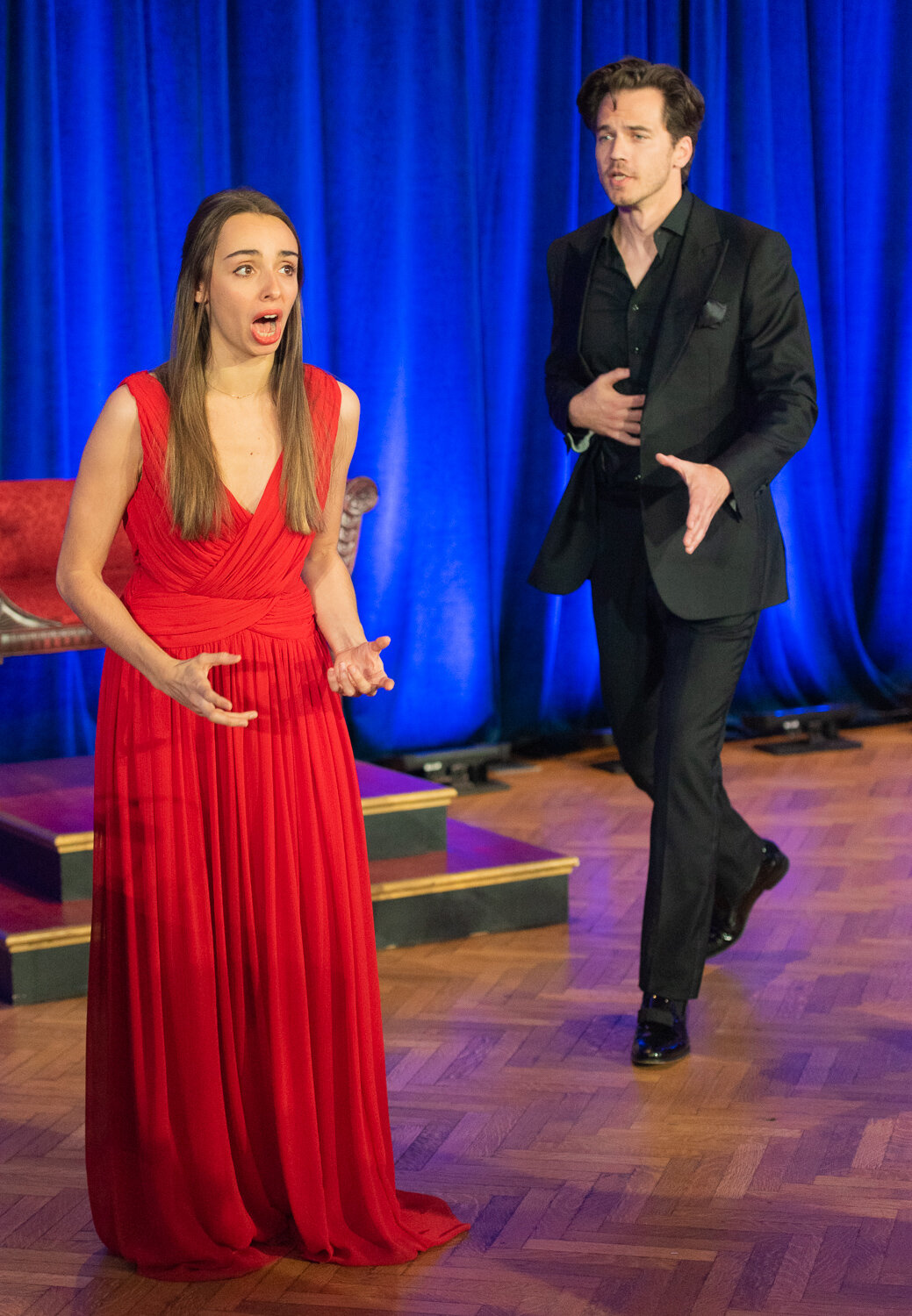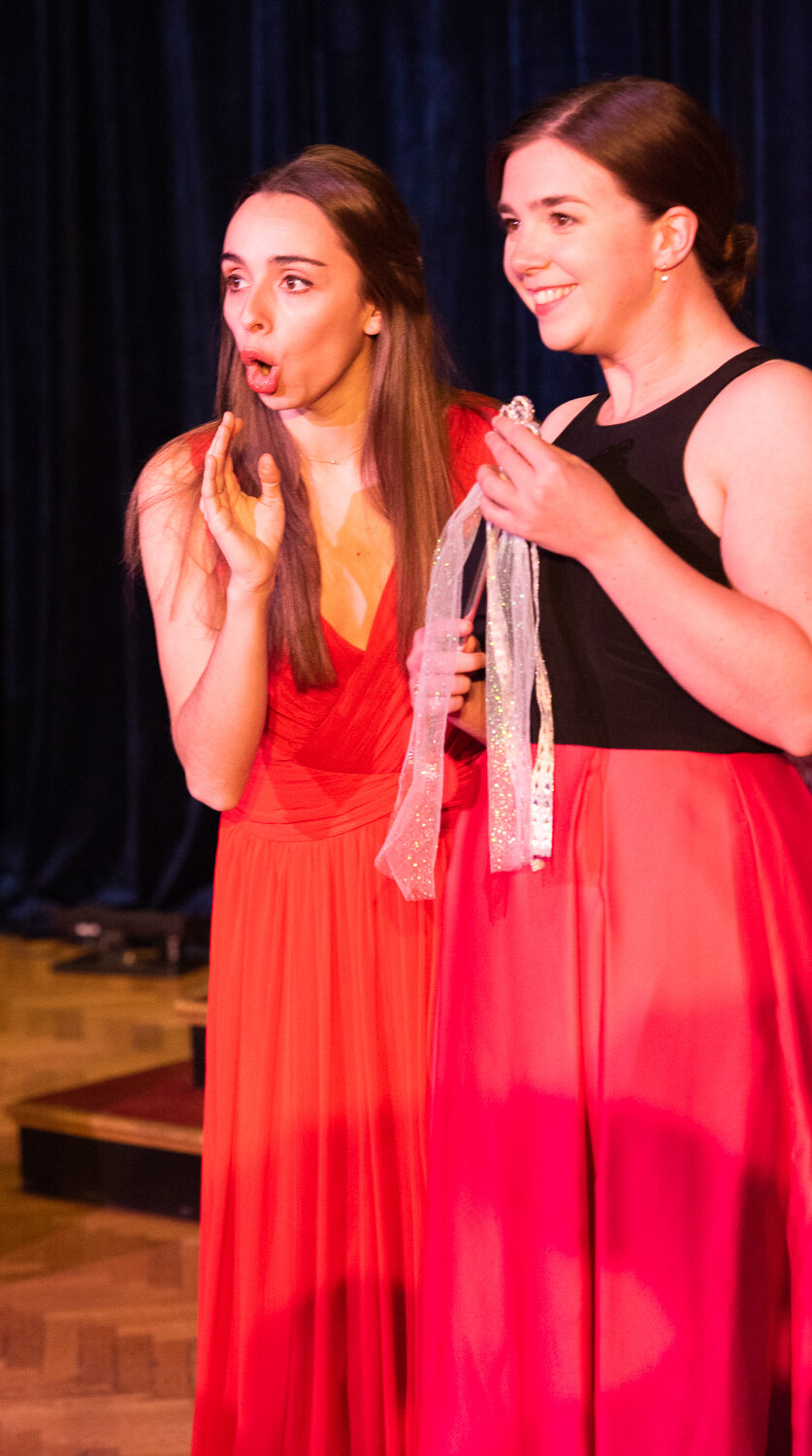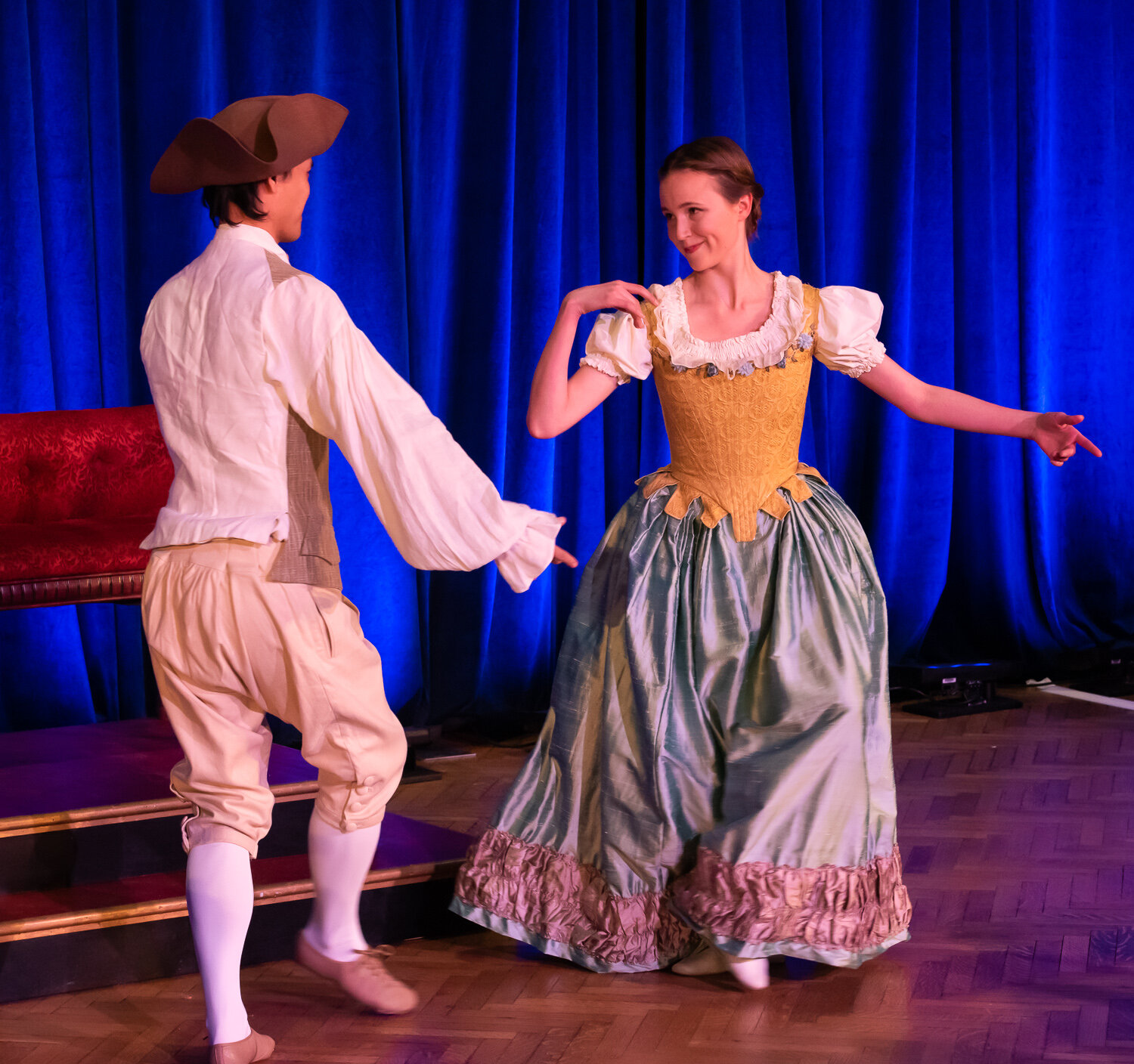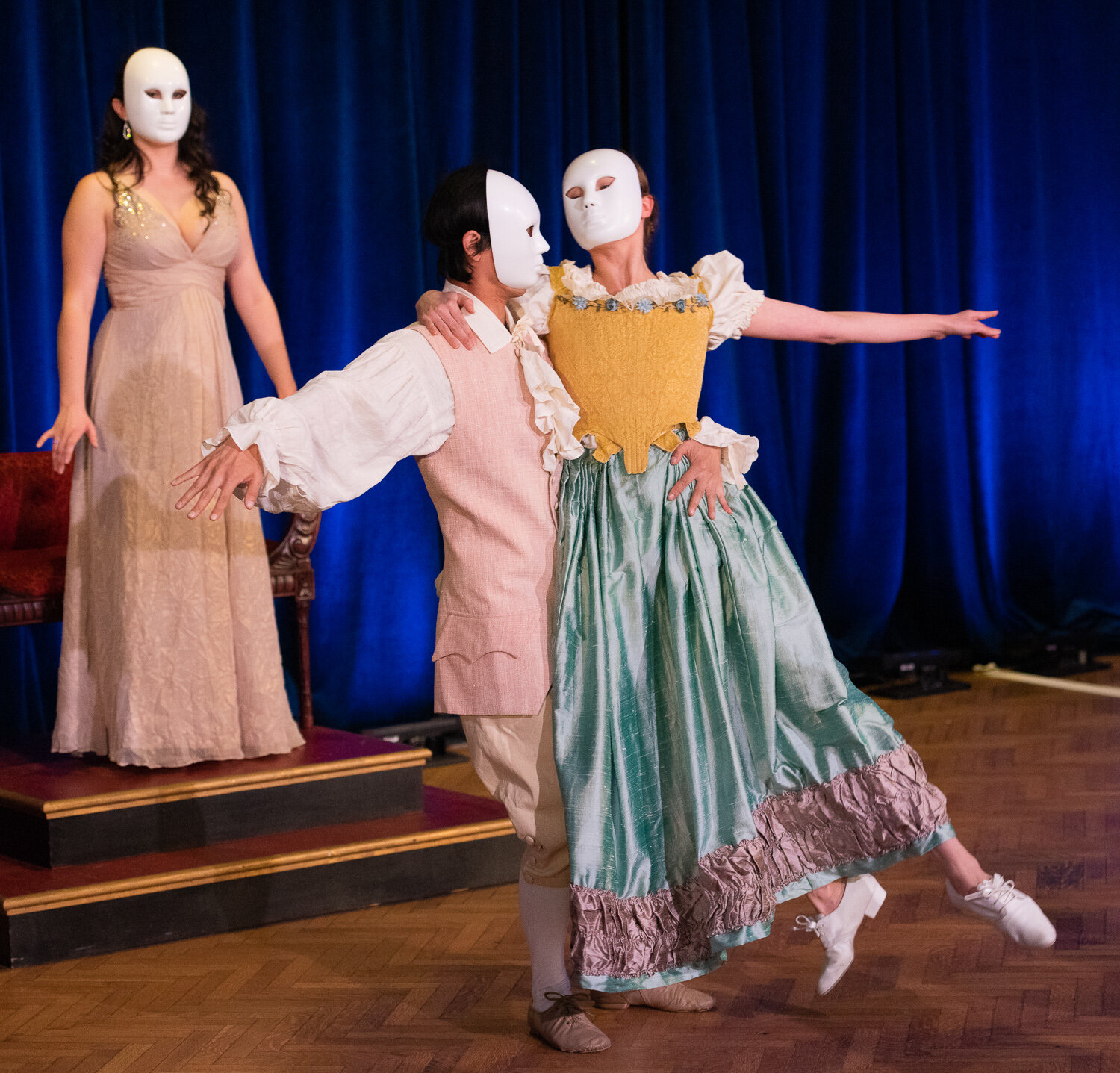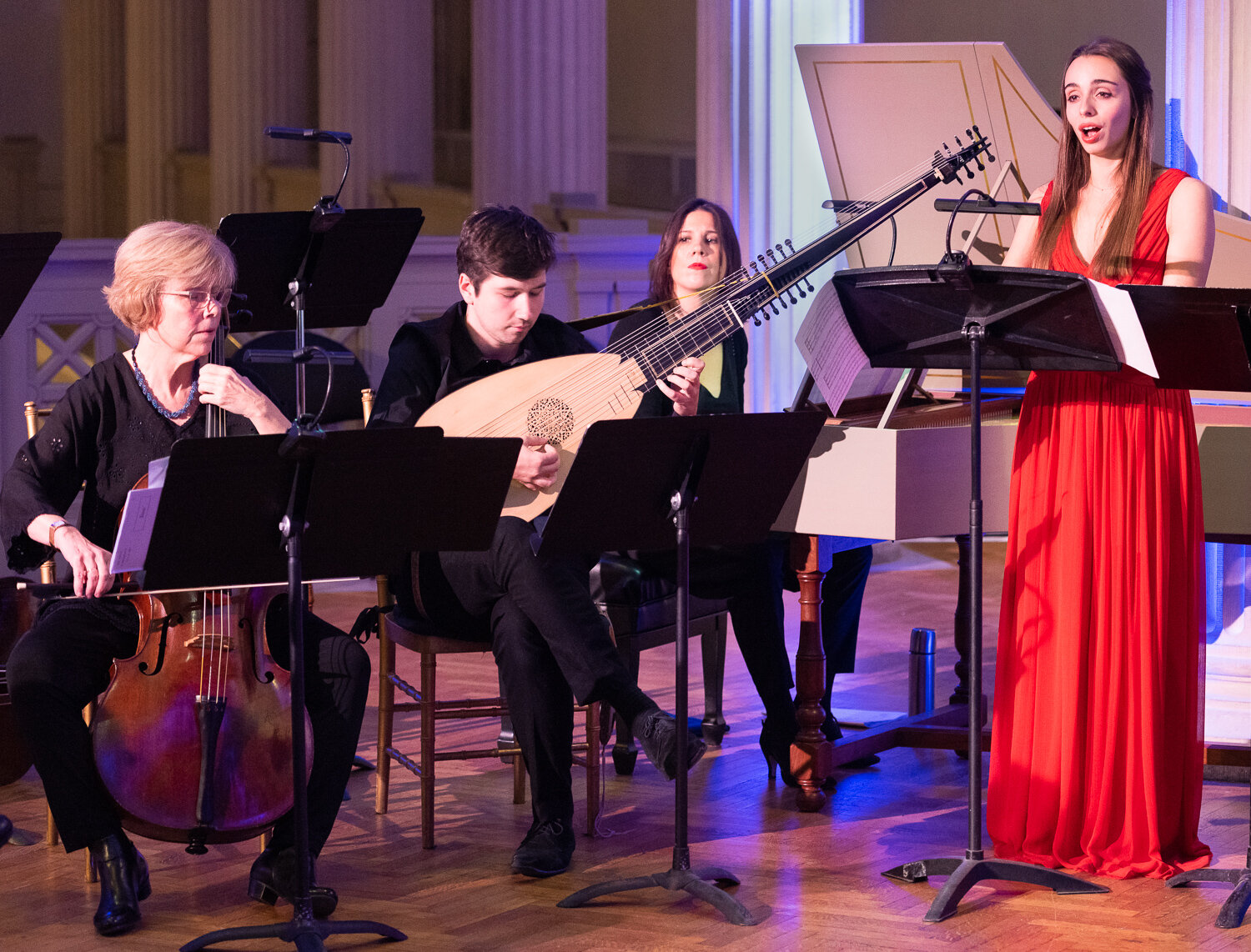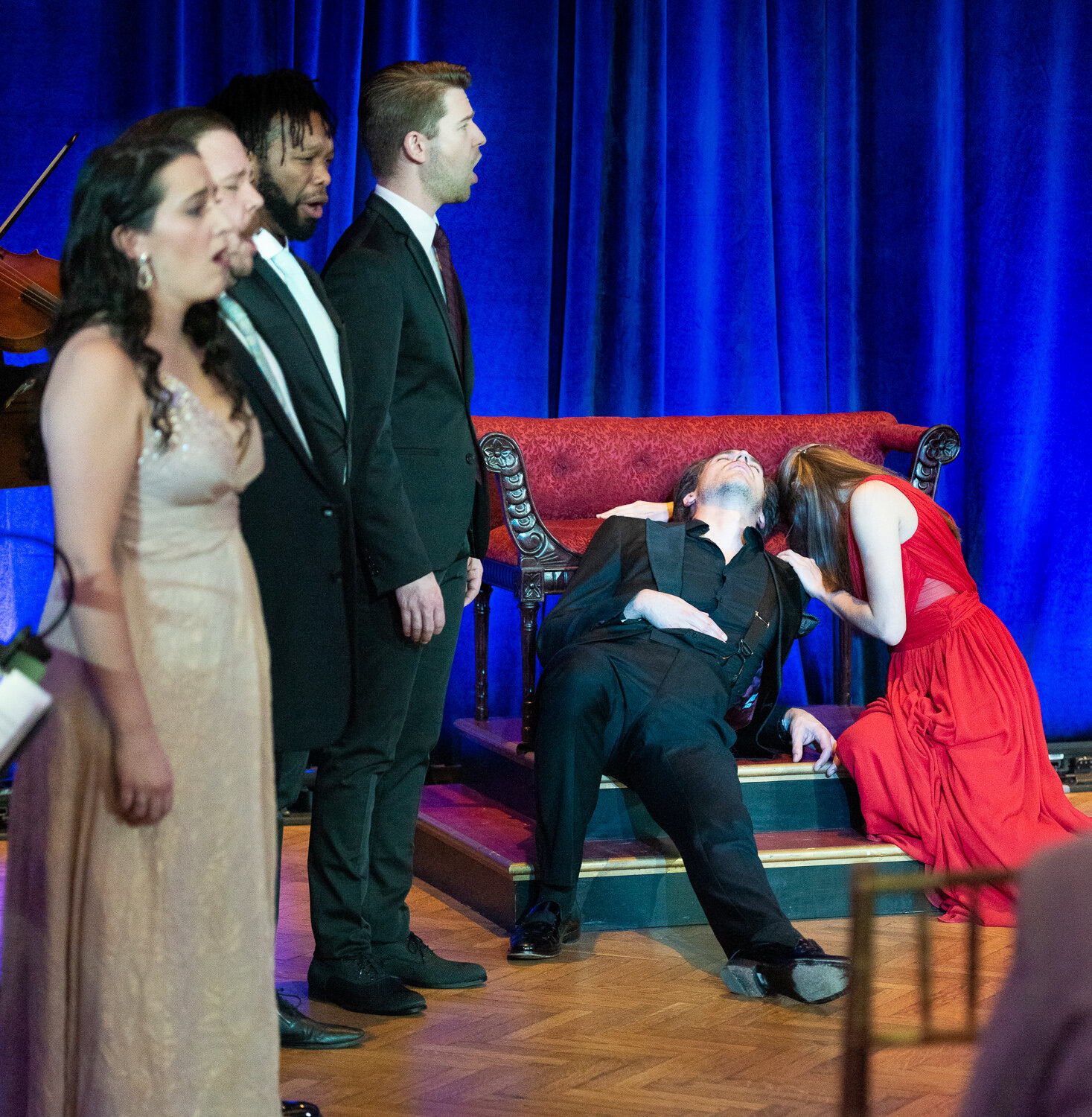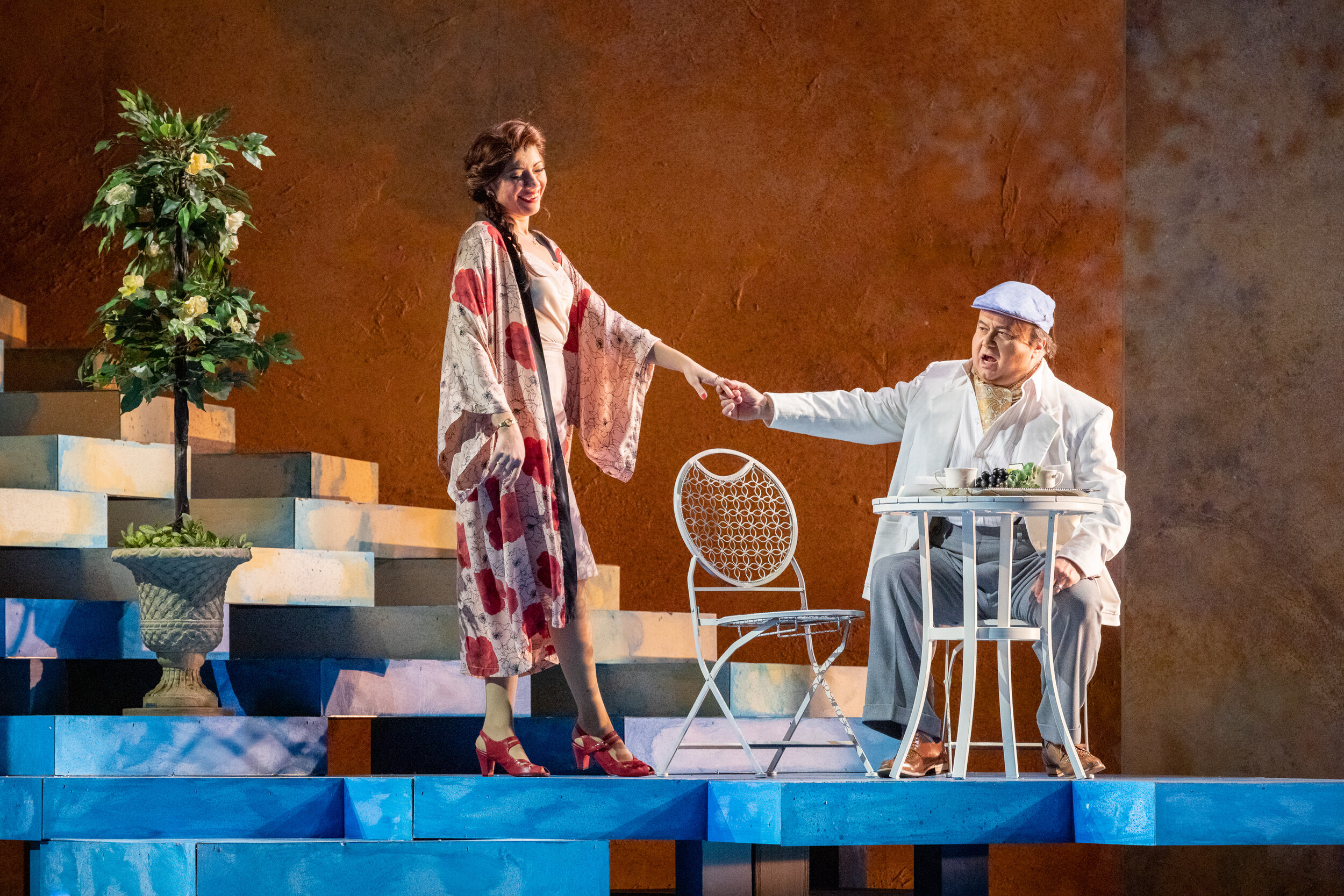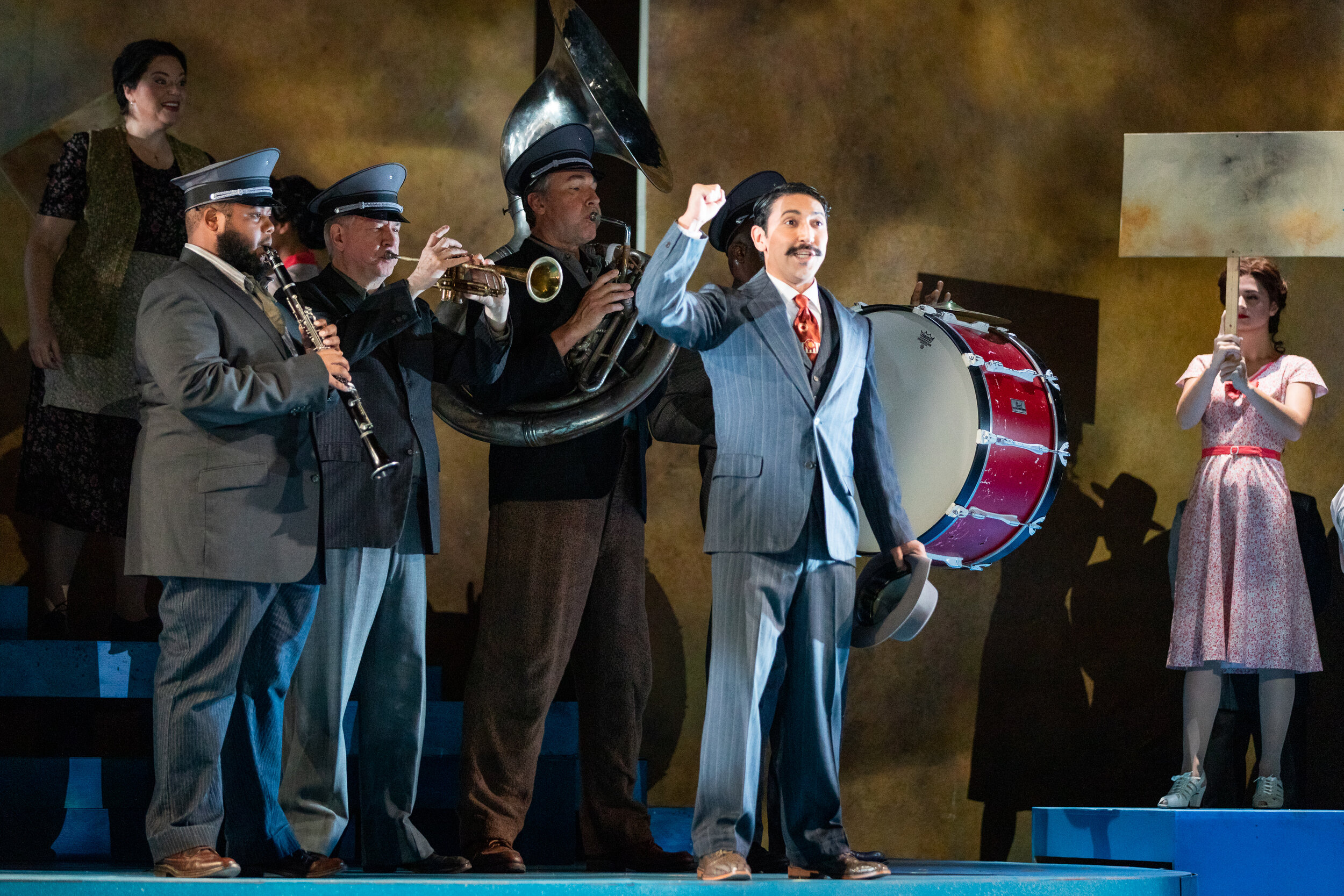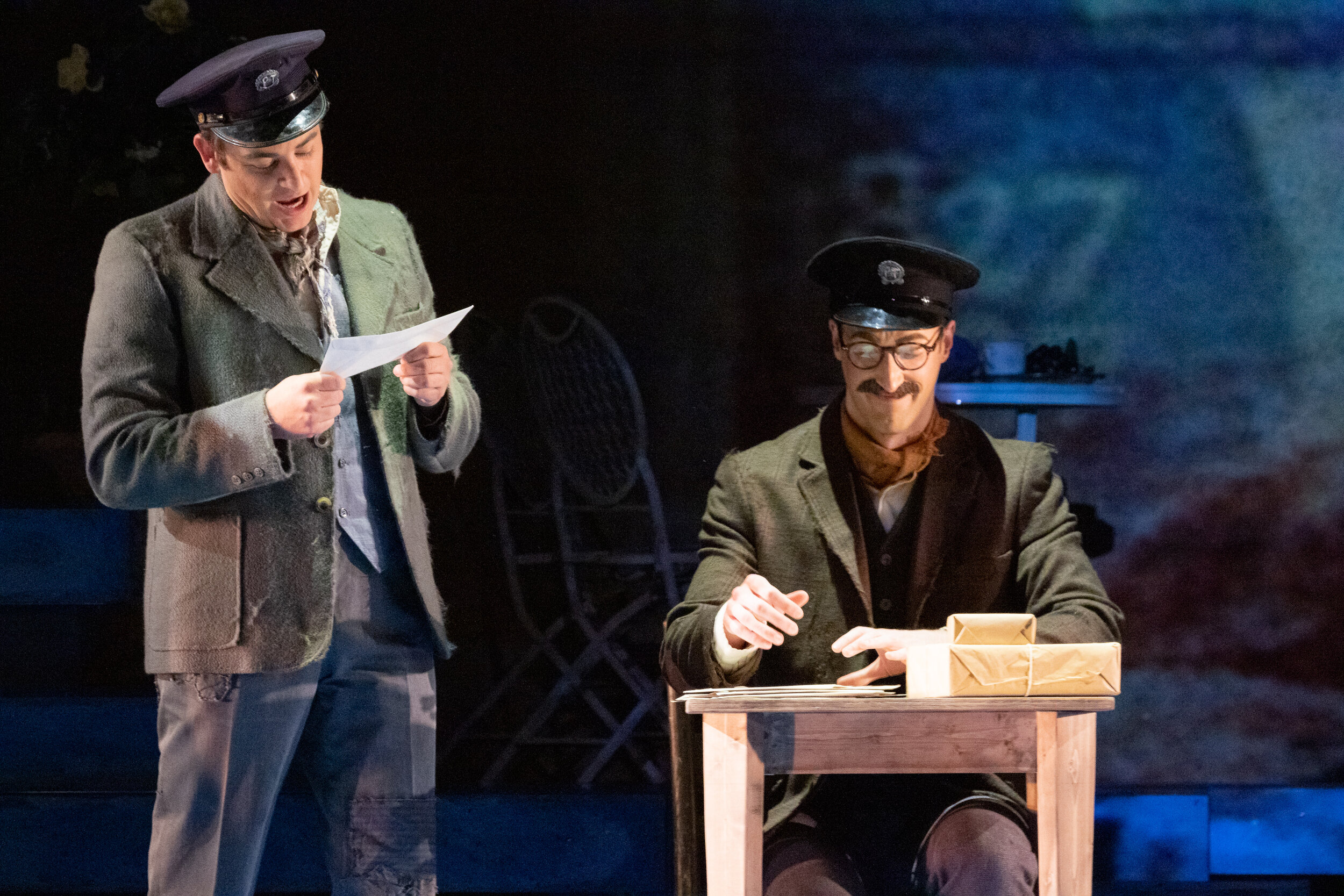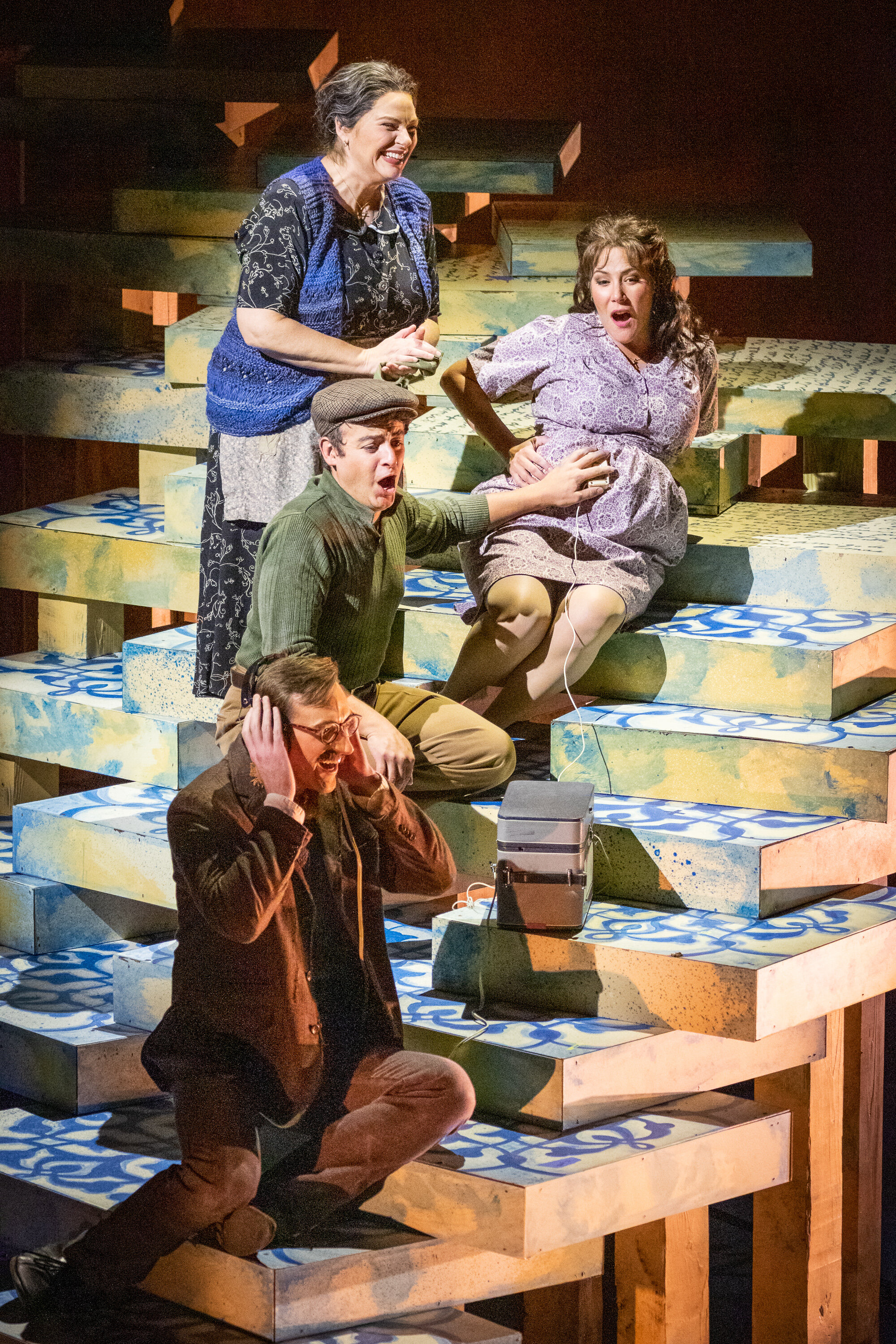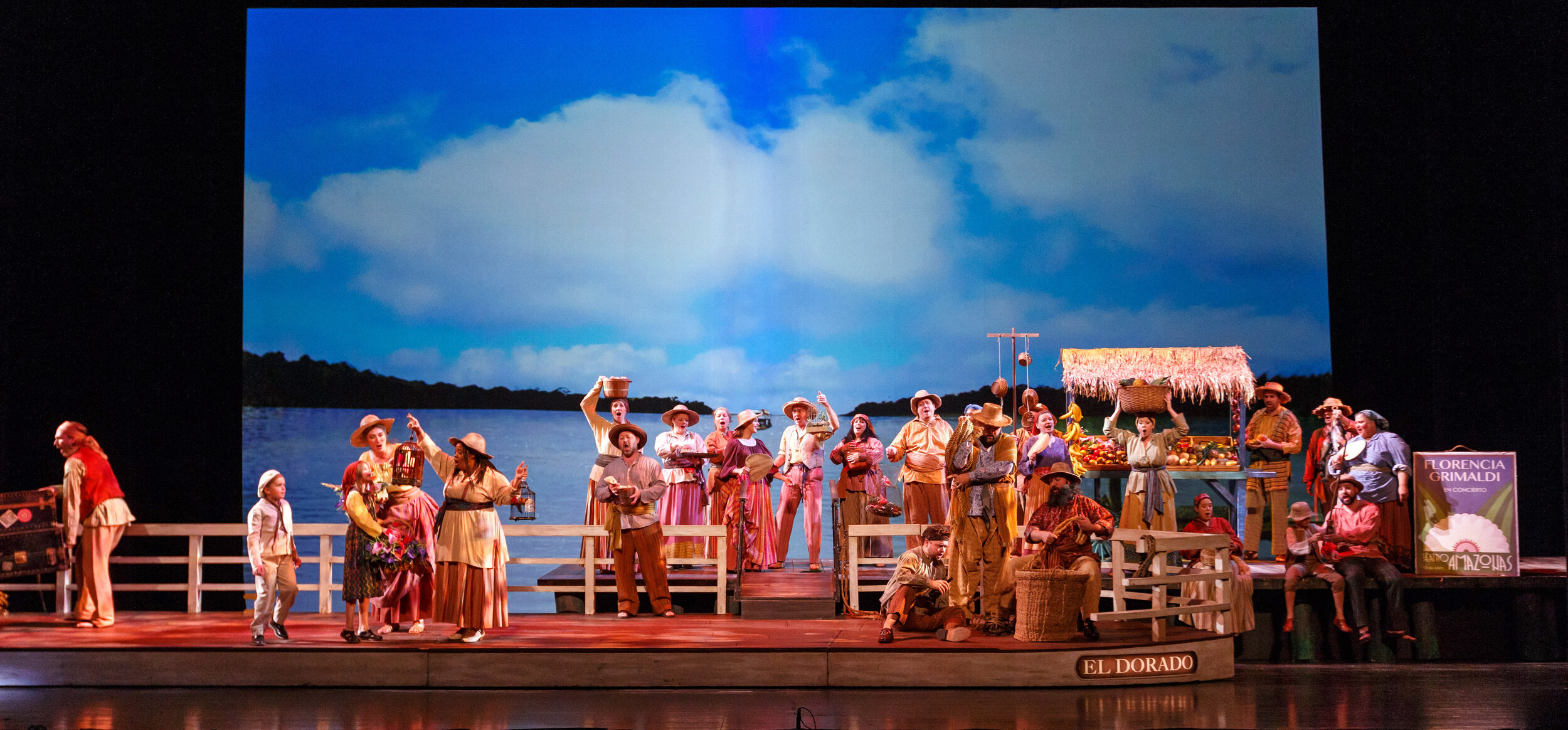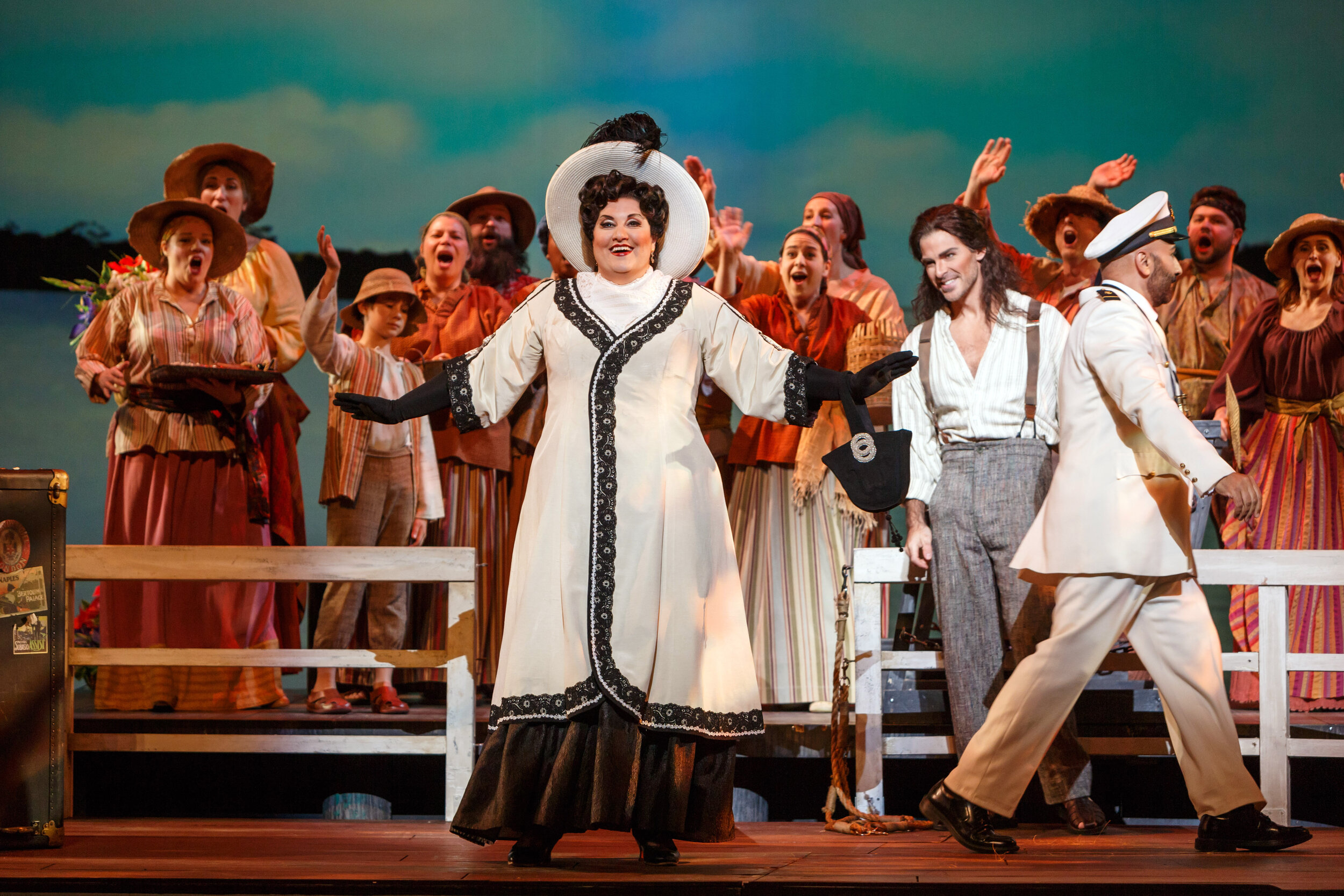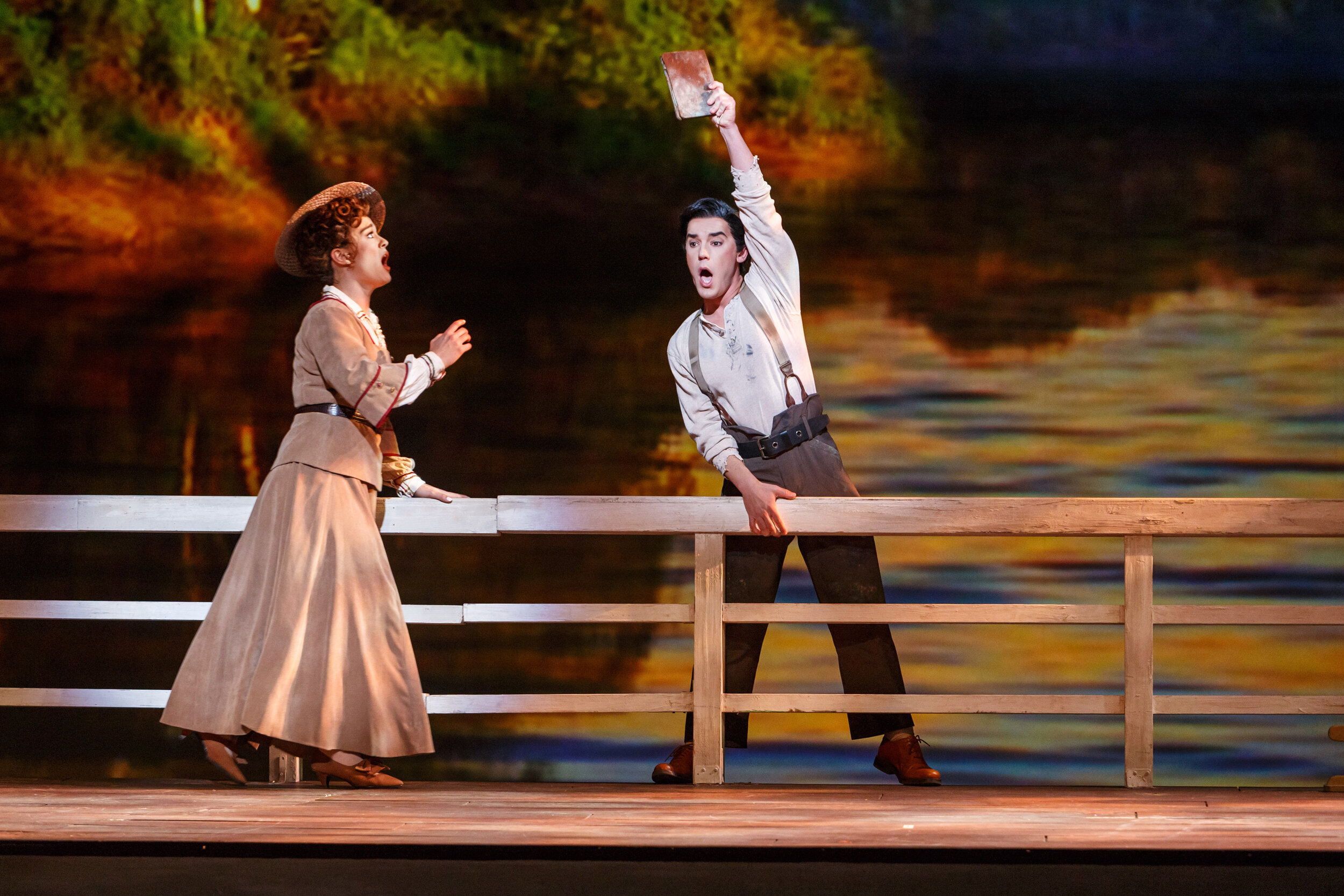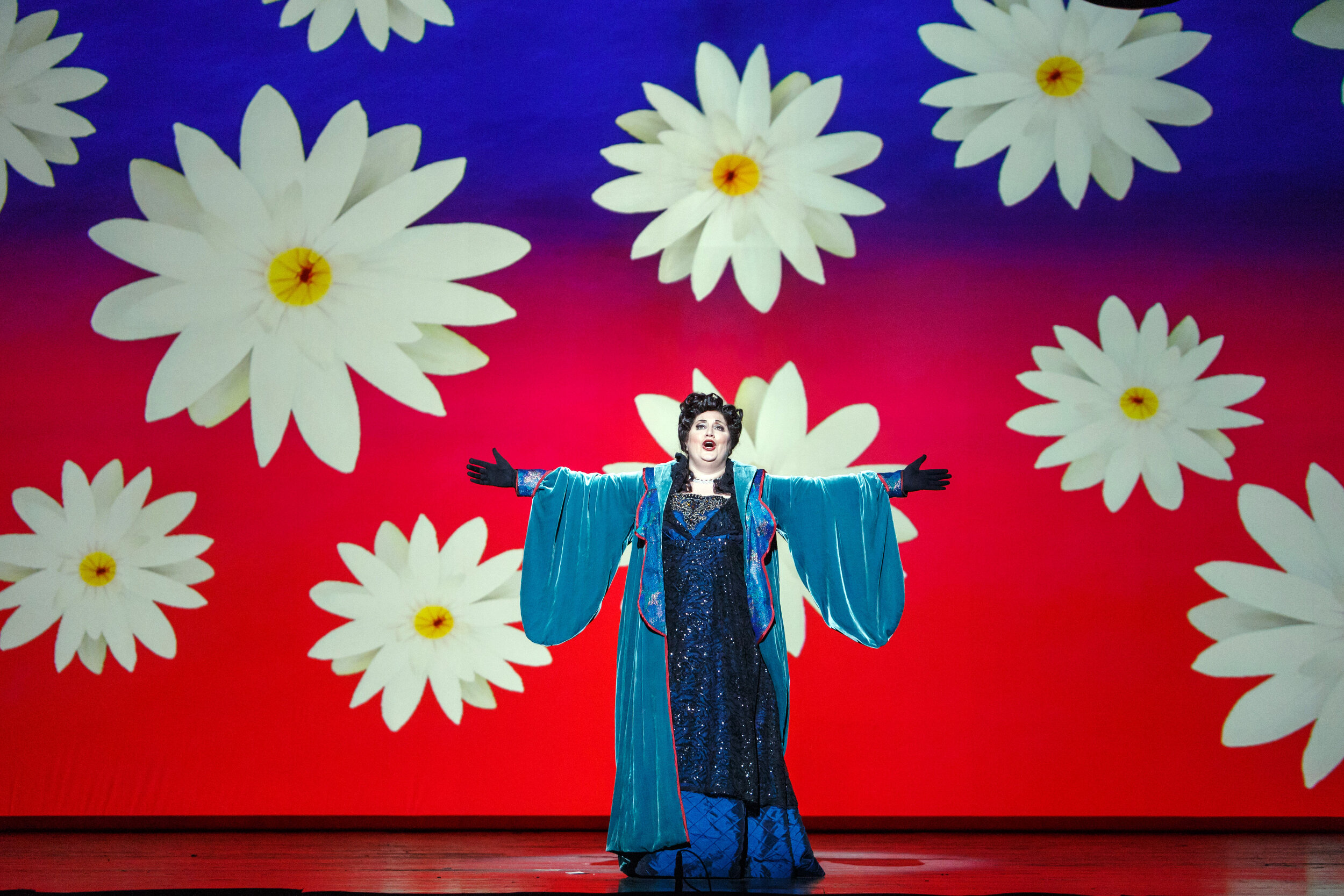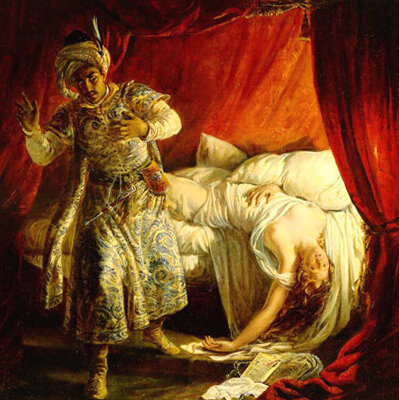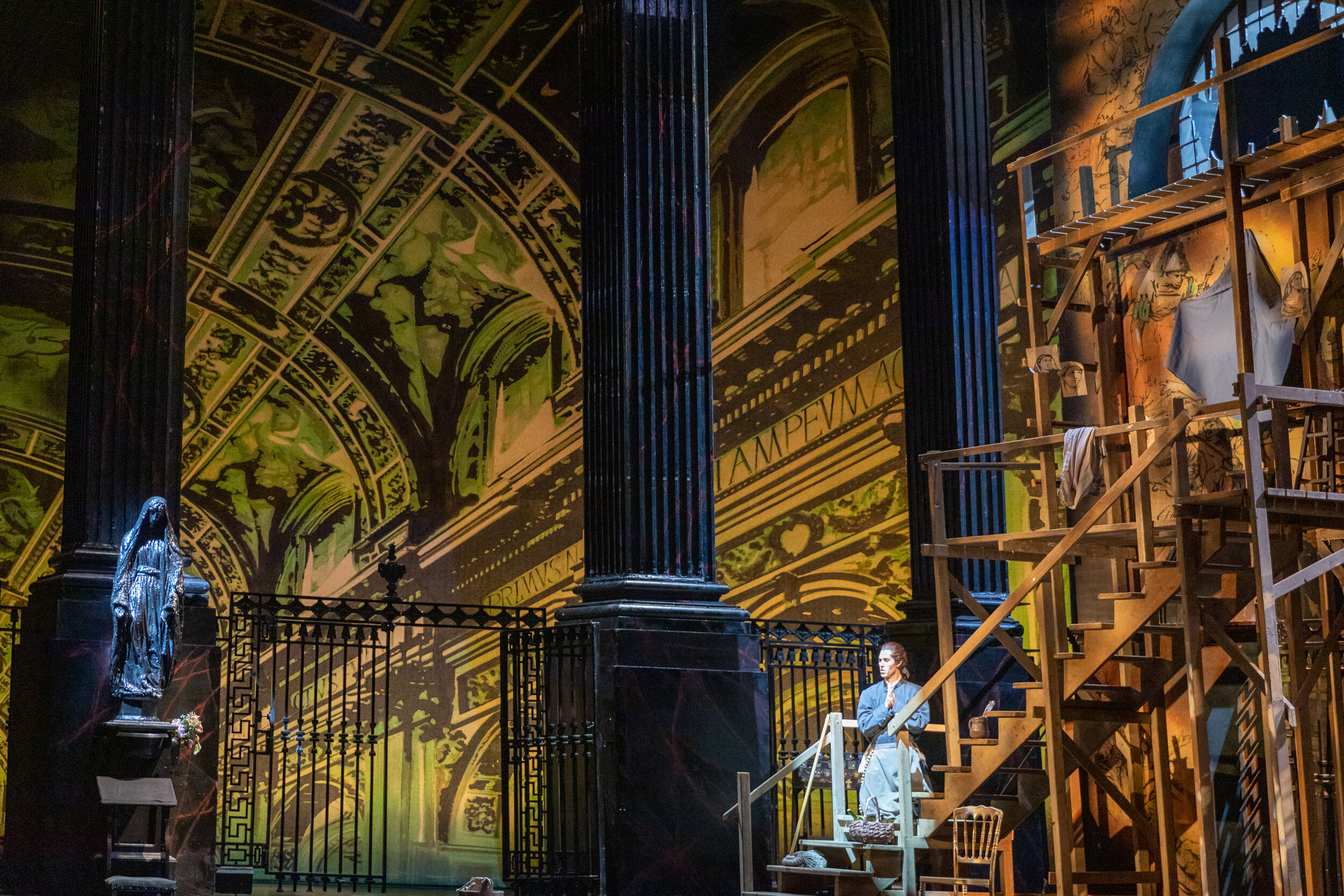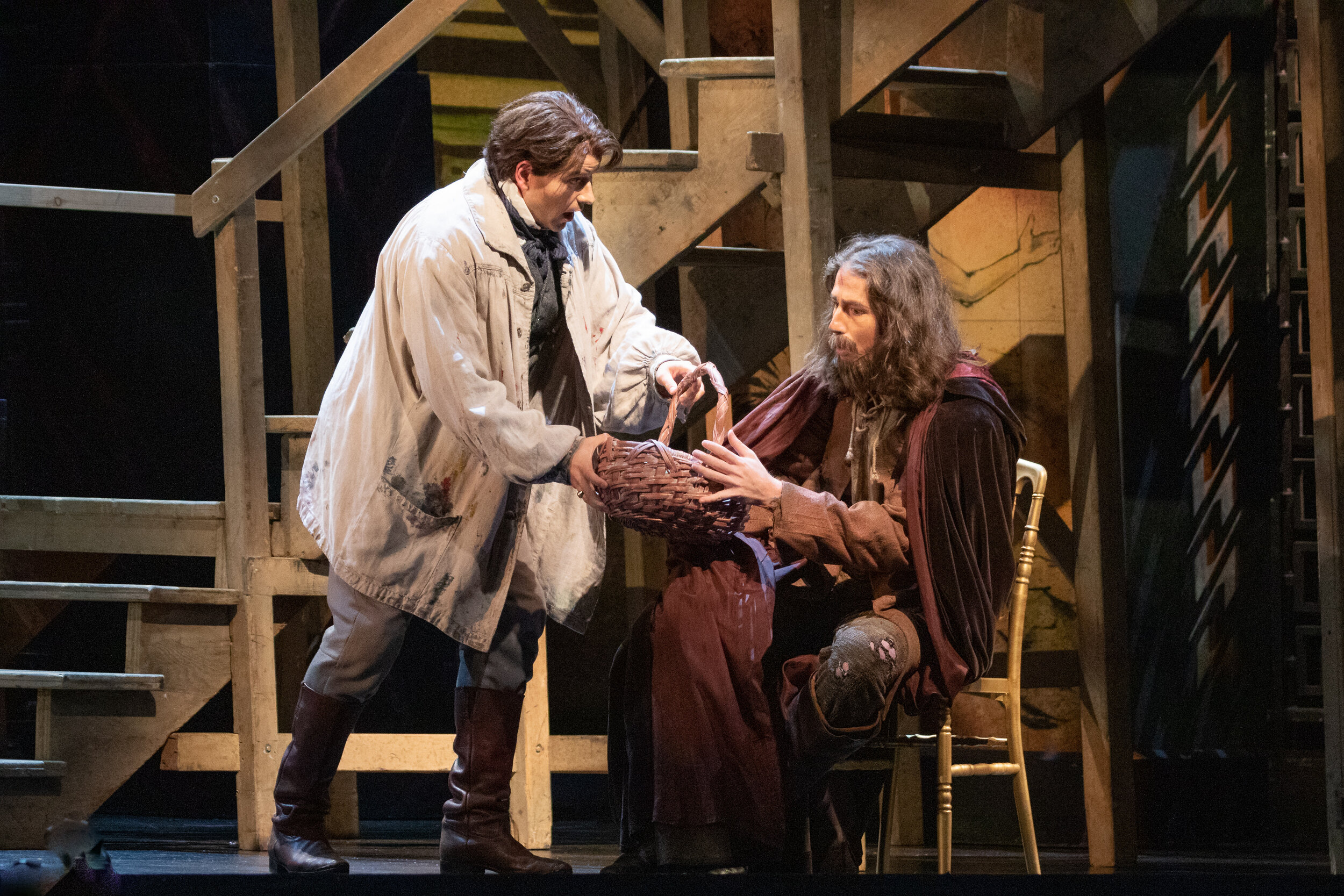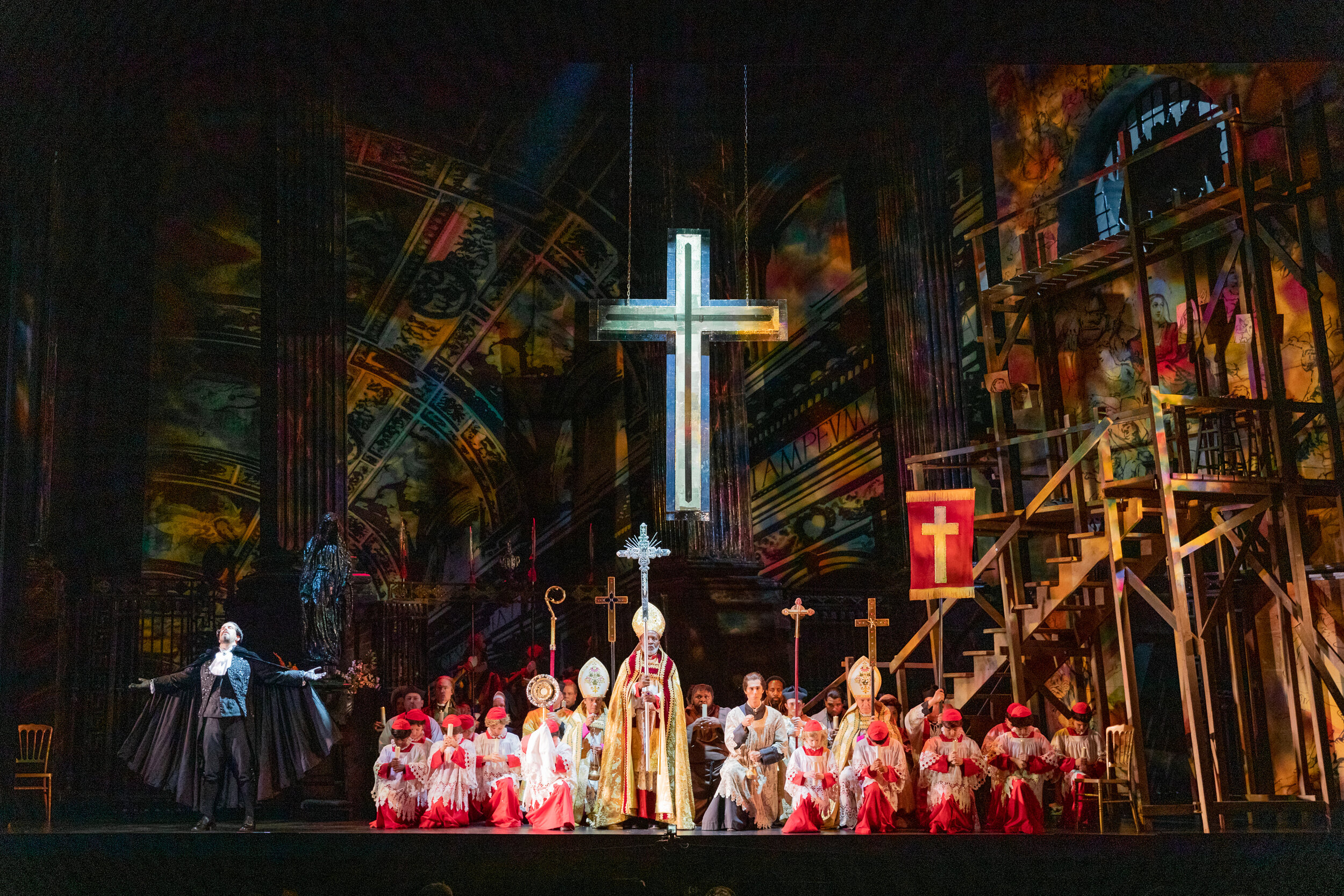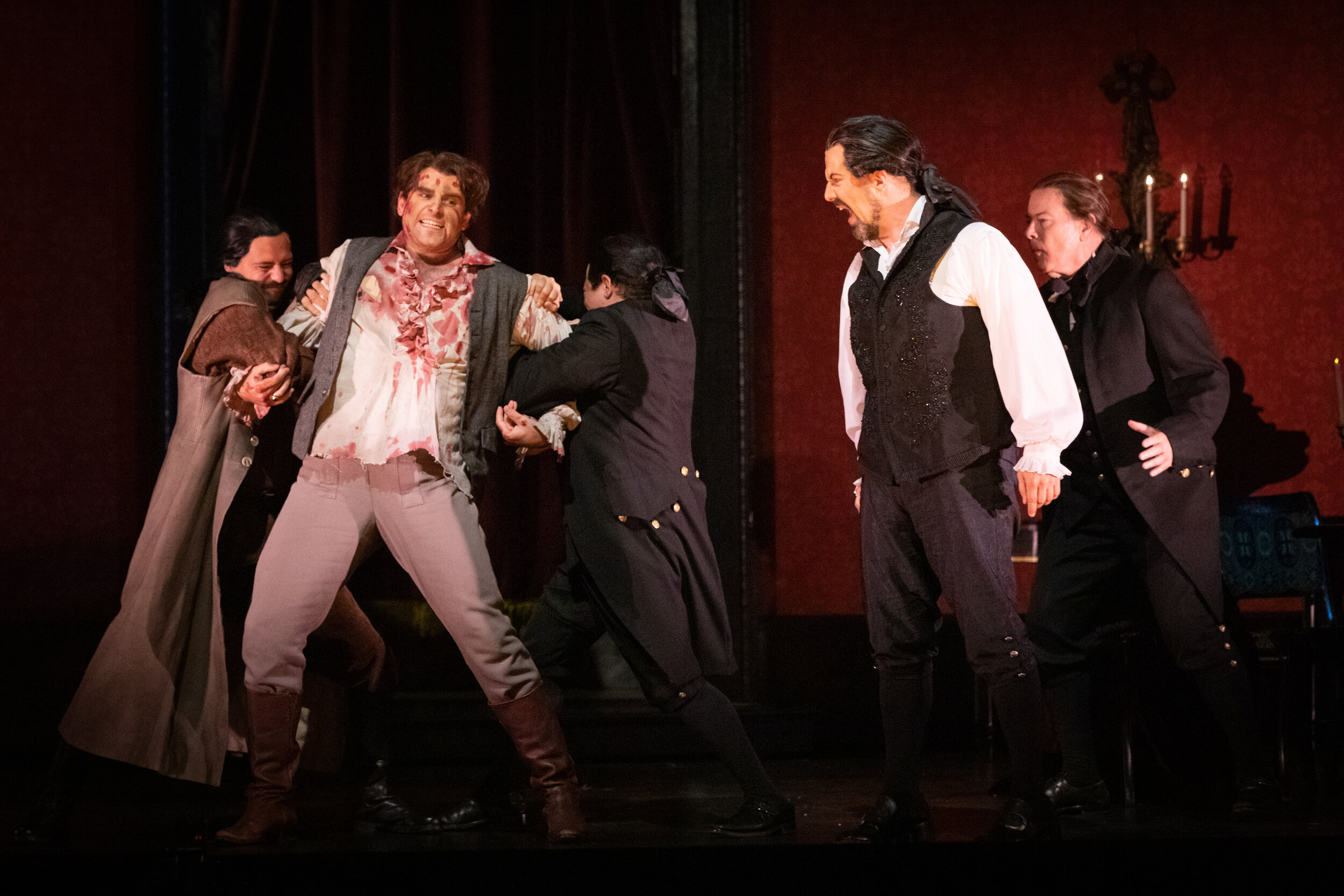In March 2016, mezzo-soprano J’Nai Bridges sang the role of Lucretia in the Barns for Wolf Trap Opera. In March 2020, she will sing the role of Delilah at the Kennedy Center for Washington National Opera. In October 2020, she will sing the role of Carmen at Lincoln Center for the Metropolitan Opera. She made her Met Opera debut this past November playing Queen Nefertiti in the highly acclaimed production of Ahknaten. In between and before, there have been many other operas and concerts, but from a training position as a Filene Artist at Wolf Trap to a headliner at the Met in four years…well, in the opera world, that is a meteoric rise to stardom. This, however, masks the years of dedicated training and performing that are part of a young opera singer’s development.
Promotional photo for J’Nai Bridges. Photo by Dario Acosta; courtesy of Unison Media.
I had a chance recently to talk with J’Nai by telephone about her path to opera, what she hopes to give back, and about her character in WNO’s Samson and Delilah. J’Nai (pronounced J’Nay), now 33, was interested in music and playing the piano from an early age growing up in Lakewood, Washington which is near Tacoma. She was also athletic with an avid interest in playing basketball, even envisioning a career path there. A pivotal point in her development came as a senior in high school: her high school basketball coach insisted she choose between basketball and music. The final score: Music fans 1, Basketball fan’s 0. She still plays basketball in the gym with friends and follows the game. She is scheduled to sing the National Anthem at the Washington Wizards game on March 8.
She made the decision to pursue her interest in music and classical singing developed in high school, without a clear career path in mind. Despite some misgivings, she received the full support of her parents and family. She auditioned and was accepted into the Manhattan School of Music, fortunate also in the sense that she was somewhat infatuated with NYC; she had visited there often with a sister who was studying mechanical engineering in Baltimore. Her parents were from Baltimore and she still has family ties in the Baltimore-DC area. NYC also provided access to the Metropolitan Opera which she attended frequently. There she heard bel canto tenor Lawrence Brownley sing, now a friend of hers and a fellow Wolf Trap alumnus, and she thought to herself that she would like to do what he was doing, be on a stage, singing to people. After graduating, she applied to the Curtis Institute of Music in Philadelphia, still not set on a definite career path. She noted proudly that Curtis has the lowest acceptance rate of college seniors in the US. Curtis also pushes career development by encouraging performing outside the school; so, she got experience performing in operas and concerts on the eastern seaboard as well as in Curtis productions and was exposed to the rich music environment in Philadelphia. Opera singers also always have singing instructors; J’Nai’s was in NYC not that far away from Curtis. She graduated with a master’s degree in music after three years, now seven years past her high school degree.
J’Nai taking a selfie with then head of Wolf Trap Opera, Kim Witman at the incoming reception for Filene Artists. Photo courtesy of Wolf Trap Opera.
Her next step was to audition and get accepted into the Ryan Opera Center, the artist development program at the Lyric Opera of Chicago, a three-year stint. She knew that this was it. It was something that she now had to do, a calling if you will. She was committed to an opera career. The Lyric program is performance based, and its trainees perform around the country and accept additional training in other programs. J’Nai was interested in coming to Wolf Trap Opera, a highly competitive summer training experience. She auditioned two years in a row but was not selected. That tells you something about the quality of WTO performers, doesn’t it? We tend to think of them as fresh off the bus new recruits, but J’Nai’s is the typical path for today’s aspiring opera singers. They come to Wolf Trap in their late twenties and early thirties with graduate degrees and significant performance experience and are among the best singers in their generation.
J’Nai made it in her third attempt and in the summer of 2015, she sang the role of Suzuki (Madama Butterfly) at Wolf Trap. One important lesson she has learned is that young performers have to learn how to handle rejection. It’s not personal, and failure is not such a bad thing. You may not be what an artistic director is looking for at that moment, but you can learn from the experience and grow from it.
Center: J'Nai Bridges as Lucretia, Christian Zaremba as Collatinus; upper left: Brenton Ryan as Male Chorus, and Kerriann Otano as Female Chorus; and right: Shea Owens as Junius, Sarah Larsen as Bianca, and Amy Owens as Lucia. Photo by Scott Suchman and courtesy of Wolf Trap Opera.
She reports that in spite of not getting into the WTO program on her first try that Kim Witman, the head of WTO at the time, and Lee Anne Myslewski, the current vice president, were very supportive in encouraging her to go forward and to reapply. In 2014/2015, she blossomed onto the national and international stage by being selected as one of 20 finalists in the Cardiff Singer of the World Competition. Though she did not win that competition, she was written about in several publications around the US, and it proved to be a huge boon to her career in opera. She returned in 2016 for a second summer at Wolf Trap, and that was when I first heard her, singing the role of Lucretia in WTO’s The Rape of Lucretia. It was a powerful performance in a powerful production that I don’t think I will ever forget. She says that it is still one of the highlights of her singing career and that she learned so much while at Wolf Trap. Here is a comment from Wolf Trap’s Lee Anne Myslewski about J’Nai’s time there:
“It was J’Nai’s innate musicality, her strong technical foundation, and her endless openness that allowed us to even consider producing Britten’s The Rape of Lucretia in 2015. (We choose singers before we choose repertoire; Lucretia would not have been on the docket had J’Nai not auditioned for us that year.)
The role of Lucretia is a tricky one, especially in our modern climate; it depicts a woman who is deeply in love with her husband but is ruined in the sight of both society and potentially her marriage due to the actions of another man. She claims agency through the only avenue that remains to her: death. The role is technically demanding but is perhaps even more challenging in light of the interpersonal relationships and the time period of the piece. We simply could not have considered producing the piece without J'Nai’s involvement. Not only does she possess a gorgeous instrument and formidable technique, but she carries herself with the dignity and inner strength that is essential for this particular role. (It’s no surprise to me that she’s often cast as royalty!)”
Rehearsal photo of Roberto Aronica as Samson and J’Nai Bridges as Delilah. Photo by Scott Suchman; courtesy of Washington National Opera.
Ms. Bridges expressed gratitude for the tremendous support she enjoyed in her time with WTO. Her time at Wolf Trap was also rewarding on a personal level. She was there at the same time as her good friend, baritone Will Liverman. She met Mr. Liverman while performing at the 2010 Glimmerglass festival, where she also met its coordinator, WNO’s Artistic Director Francesca Zambello, who led the festival. Mr. Liverman’s career is also booming; he too was in Met Opera’s Akhnaten and subsequently appeared as Pappageno in the Met’s Magic Flute. WTO’s alumni have a way of returning and he recently gave a chamber music recital at the Barns. J’Nai says that she is still friends with all the other Filene Artists that she overlapped with, a very rich experience for her.
I think it is early to ask anything back of Ms. Bridges, but she is already thinking in those terms. This is likely due to her gratitude for all the support she has received and concern about the future of her chosen field. She believes she has been given a gift that allows her to touch people with the beautiful sound she can make, and she hopes to play a role in encouraging interest in opera for both aspiring singers and potential fans. She did not grow up listening to opera and wonders how it might have influenced her path, and if increasing early listening might bring more fans to opera. As a young, African-American woman, she plans to use her success and stature to attract a younger, more inclusive audience to the opera house and to provide encouragement for young black performers. She applauds Washington National Opera for their strong push to enhance inclusiveness. I concur; take a look at the performers in the remainder of this year’s schedule and the recently announced 2020-2021 season. Right now, Ms. Bridges is doing lots of interviews and guest appearances, certainly to enhance her career, but I think also for her success as a rising opera star to be seen by young black people and to encourage attendance and the participation in opera by more members of the black community.
J’Nai Bridges as Delilah in rehearsal photo from Samson and Delilah. Photo by Scott Suchman; courtesy of Washington National Opera.
I asked her about the upcoming Washington National Opera production of Camille Saint-Saëns’ Samson and Delilah. What was it like to play such complicated female characters, especially ones who lived hundreds of years ago and make them speak to today’s audiences? She said it was a challenge. Delilah tricks Samson, seducing him to learn the secret of his power and causing his downfall. She says part of Delilah she can relate to, but there are parts of Delilah that are not in herself and that she has to let go of J’Nai and create them within herself to effectively portray this woman – all the while singing beautifully, I might add. She said that tenor Ronaldo Aronica who plays Samson is wonderful to work with and playing off him helps her to get to the places she needs to go – he is also an opera star with Met Opera credentials. It was fun that her feminist side surfaced a bit as she pondered how Delilah is viewed as strictly evil while Samson gets away with killing all those in the temple. She wonders what caused Delilah to be the way she was and mused philosophically that we have to see people as complete individuals and not demonize them.
I told J’Nai that I was especially looking forward to her Act II aria, “Mon coeur souvre á ta voix” (“My heart opens to the sound of your voice”), which I think is one of the most beautiful in the repertoire. She agreed and said that that aria and other vocals in Act II were a bit of a marathon (the aria itself is over six minutes long). She says she really has to take care of herself physically to be able to manage it – I have made the case in the past that singing opera could be an Olympic event. She says that initially it requires focus and concentration, but now her muscles have learned the role and she can do it naturally. Personally, I can’t wait.
As I hope you can see, though her success has come relatively fast, it was also hard earned with years of dedicated hard work and training. I didn’t venture into her personal life, but she did comment that while she was happy with her life and her choices, she knew that she had paid a price – not going out clubbing with friends and vacations not taken. I don’t think chances for those activities are going to increase now. Her website lists 39 operas, competitions, and concerts since her time at Wolf Trap and seven more on her schedule after Samson and Delilah. But, on the other hand, she has lots of support from family and friends, and seems to me very contented, while still striving to achieve even more and still playing some basketball.
Snapshot by author last night of poster at the entrance to Kennedy Center’s Opera House.
Talking with J’Nai Bridges made quiet an impression on me. Her balanced life view, her relaxed candor and her willingness to dig deep into her memories to respond to my questions was impressive and much appreciated. My respect for her as a person soared as we spoke. I suspect Ms. Bridges is typically the most grown up person in the room.
My wife still talks about seeing Bruce Springsteen in performance at her college before he became “the Boss”. I’m sure for many years I will talk about seeing J’Nai Bridges at Wolf Trap and getting to talk with her about it.
The Fan Experience: You can see J’Nai Bridges performing in Samson and Delilah in the Kennedy Center on March 1, 4, 7, 13, 16, and 21.
If you have yet to discover Wolf Trap Opera, it is time you did; check out their Summer 2020 Season just announced here: https://www.wolftrap.org/opera.aspx












